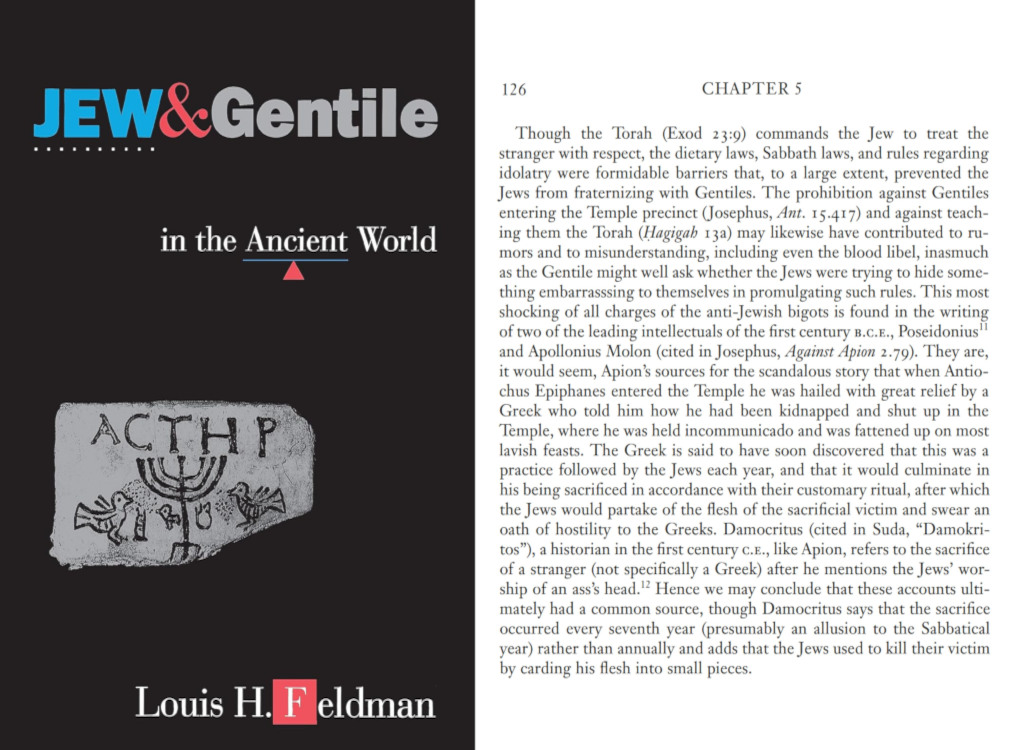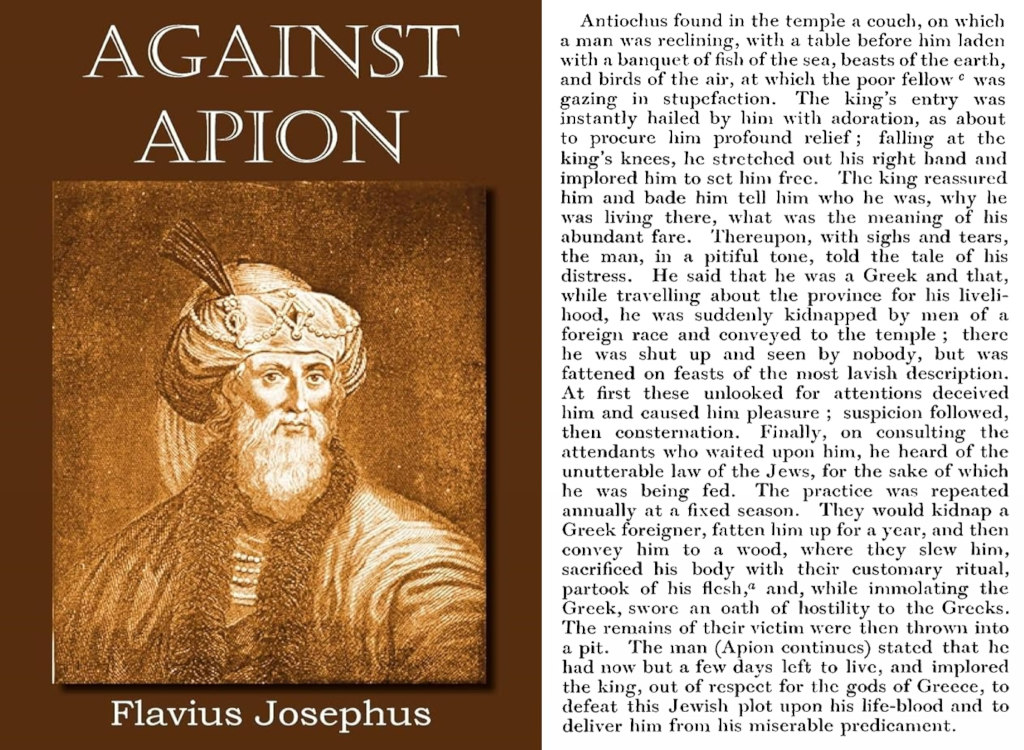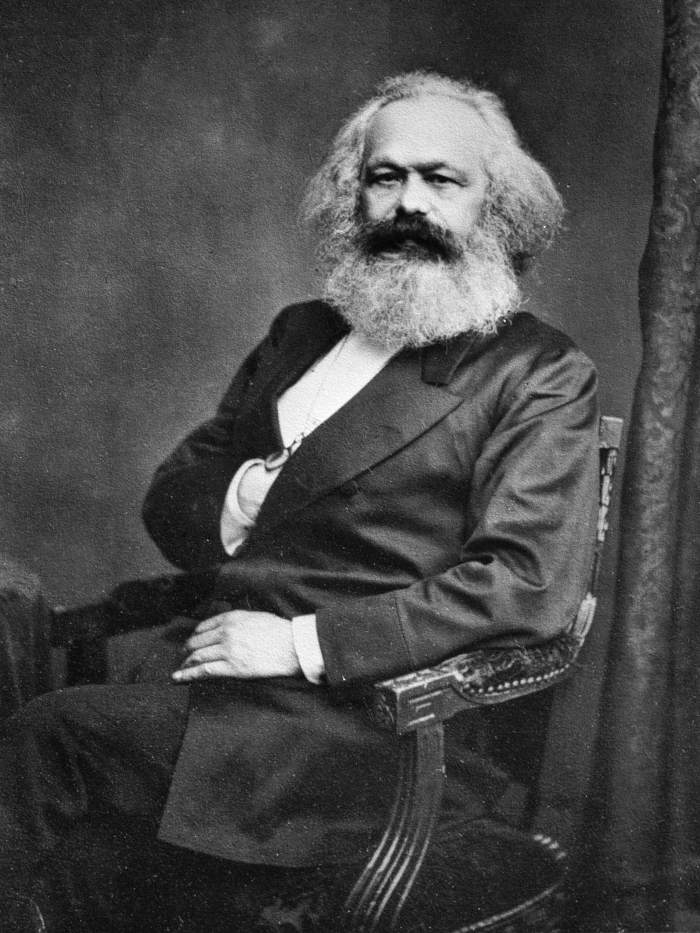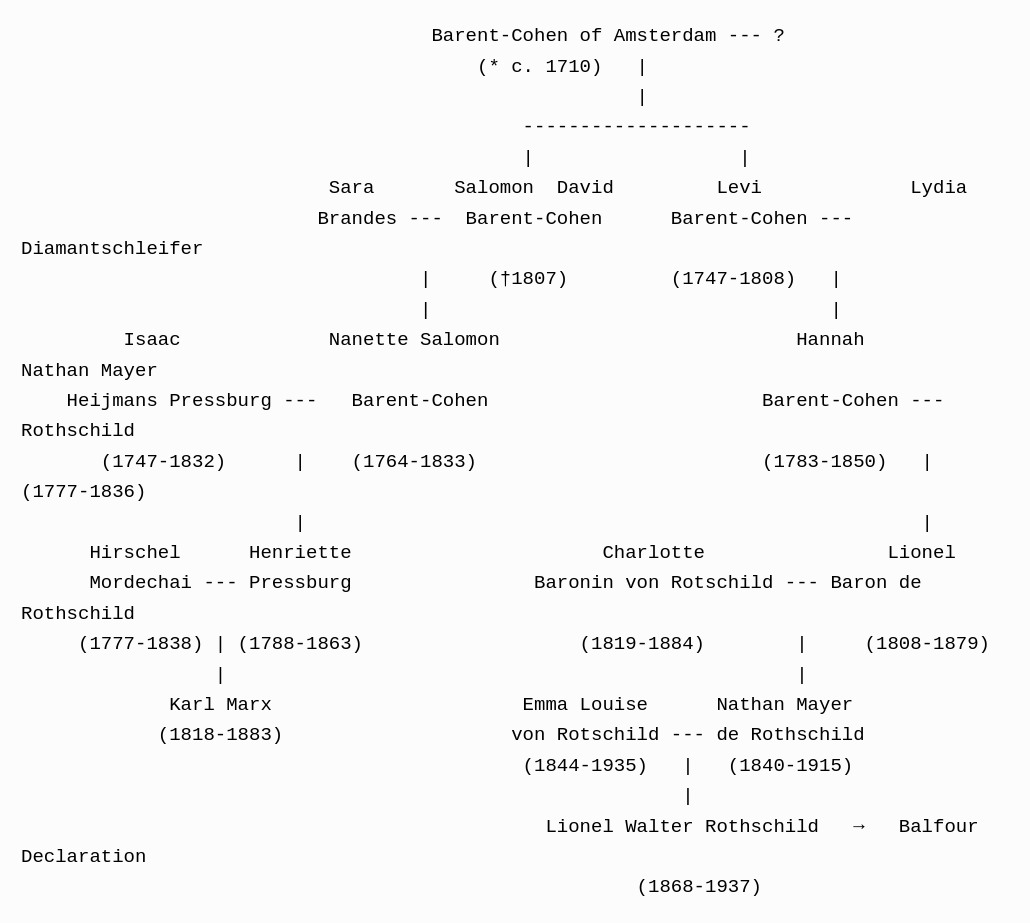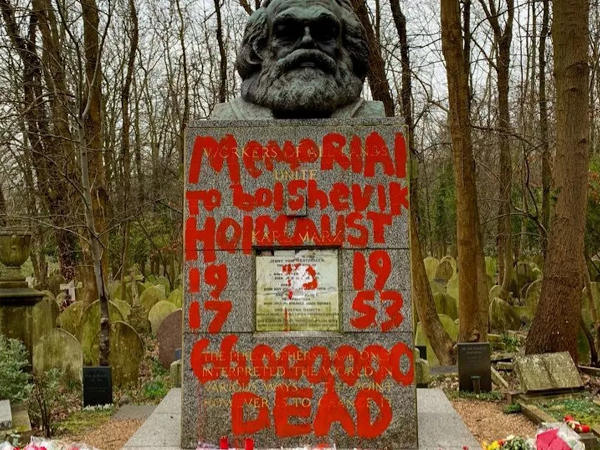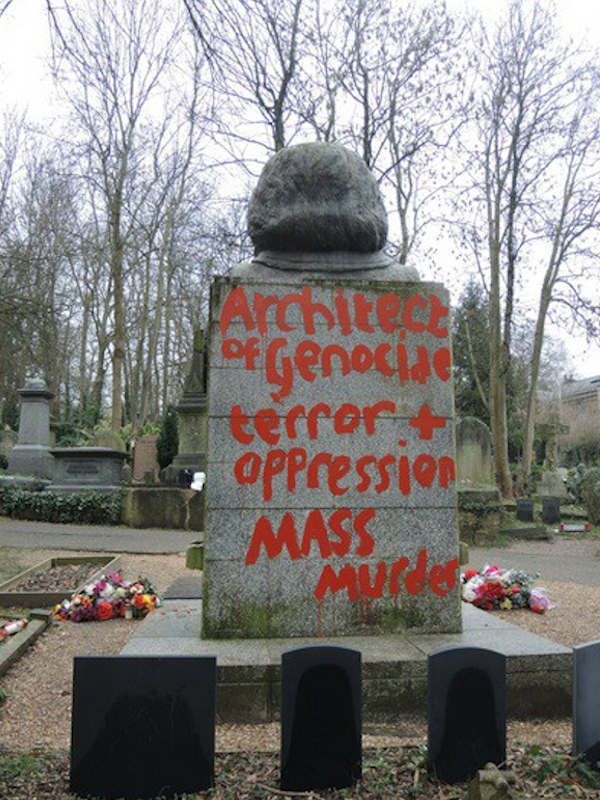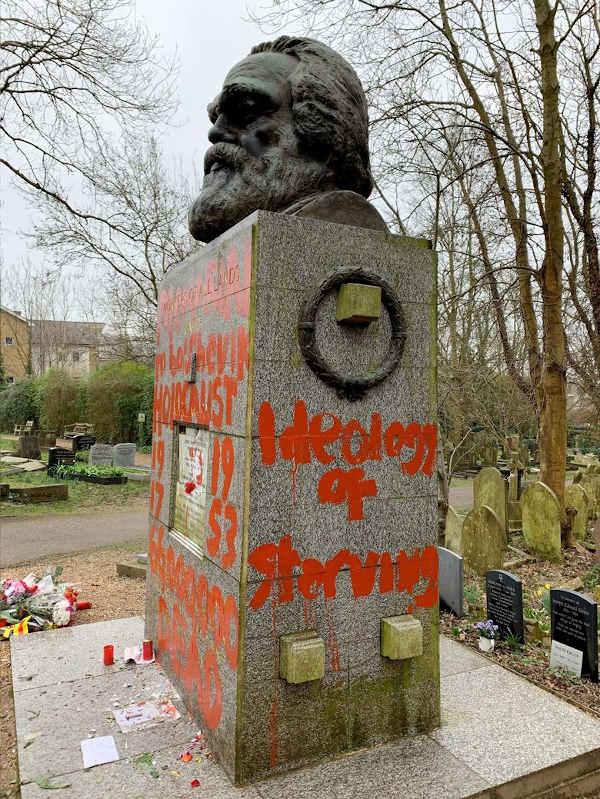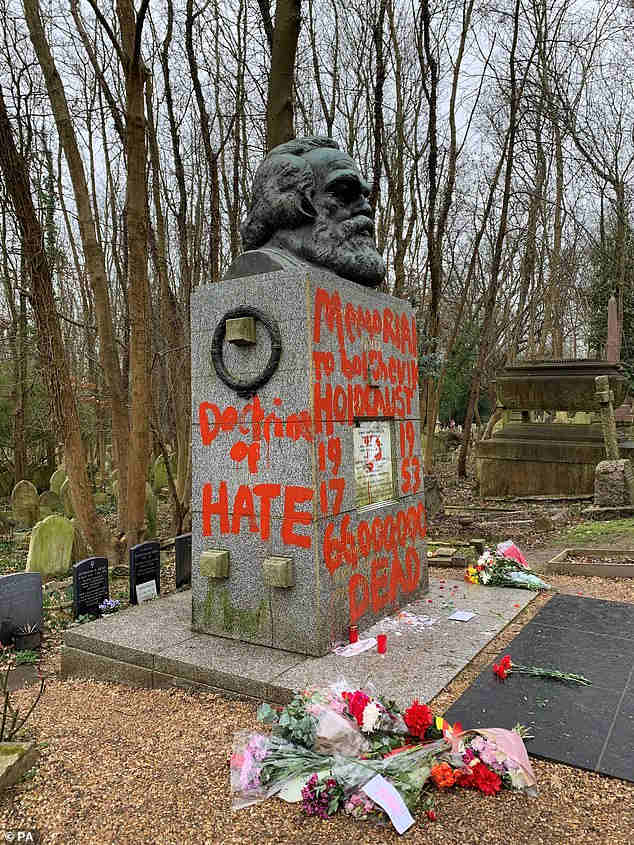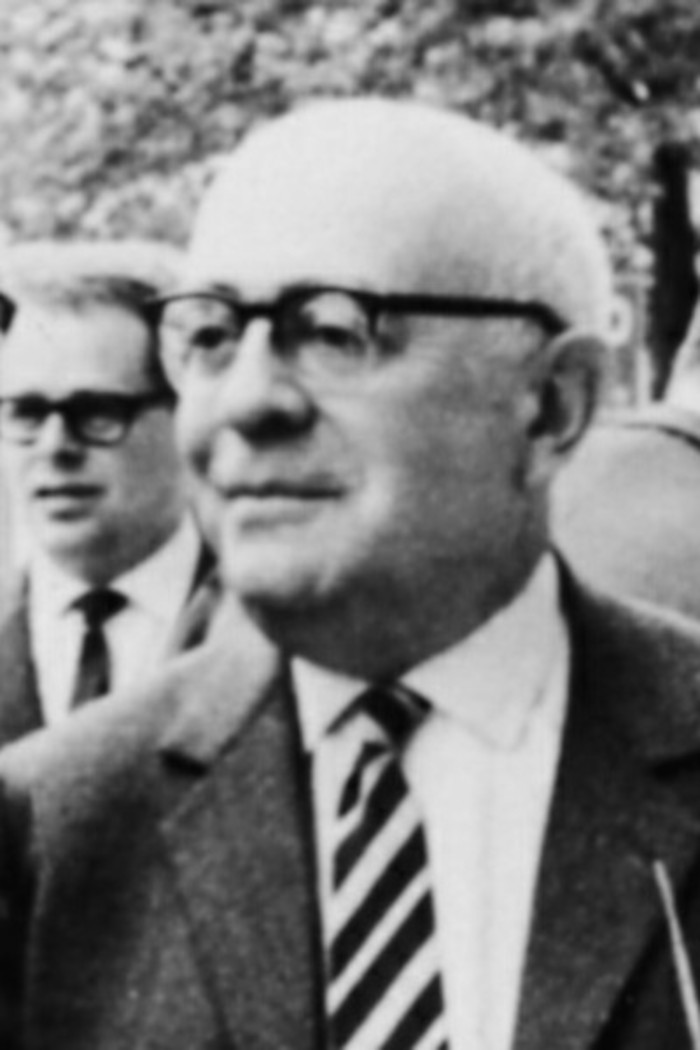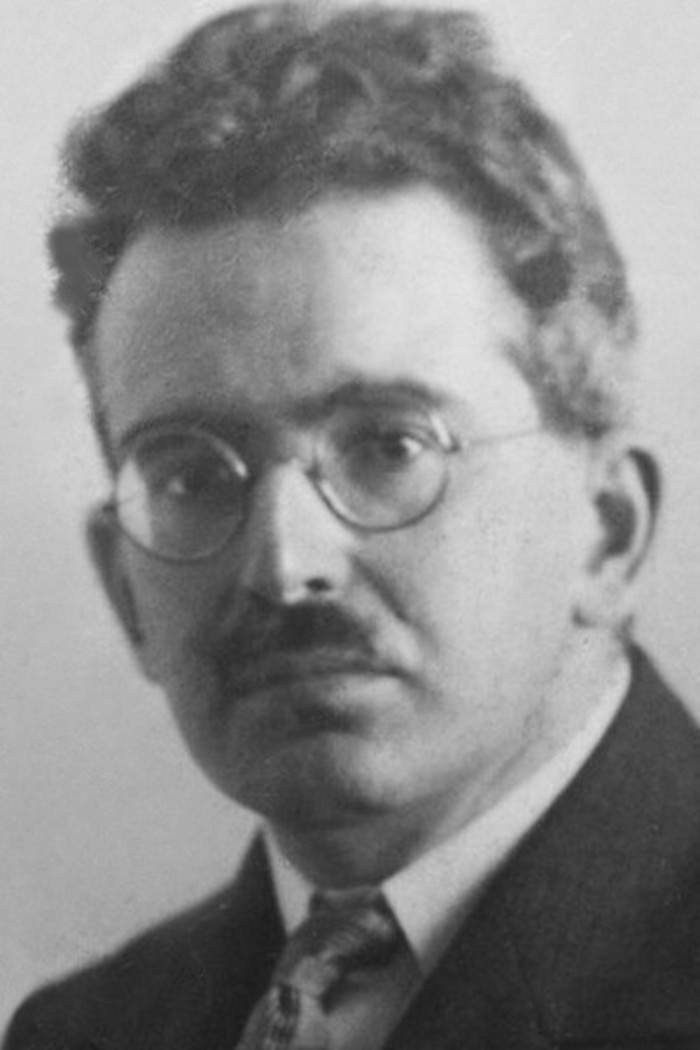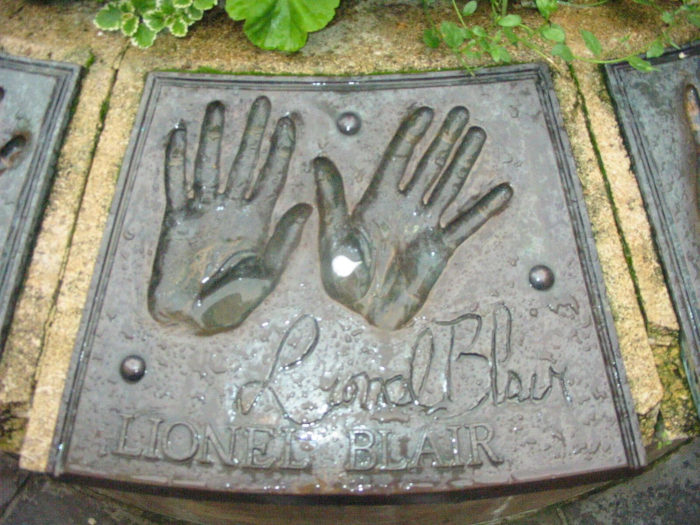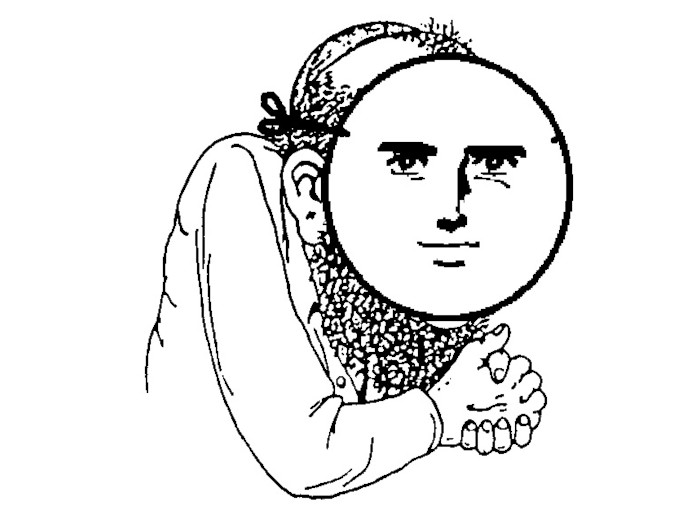
An Orthodox Jew beats a cockerel to death over his corona during cruel "kapparot ritual" believing this will cure his sin during Yom Kapur.
Judaism
Judaism is an Abrahamic, monotheistic, and ethnic religion comprising the collective religious, cultural, and legal tradition and civilisation of the Jewish people. It has its roots as an organised religion in the Middle East during the Bronze Age. Modern Judaism evolved from Yahwism, the religion of ancient Israel and Judah, by the late 6th century BCE.
- Judea
- Babylon
- Egypt
- Festivities
- Blood Libel
- William of Norwich
- Simon of Trento
- Robert of Bury
- Timeline (1071-1900)
- Jewish Ritual Murder of 5 Chicago Children
- Edict of Expulsion
- Well Poisoning
- Alhambra Decree 1492
- Sabbateanism
- Transatlantic Slave Trade
- B'nai B'rith
- Six Million Dead Jews
- Pogroms in the Russian Empire, 1821 – 1906
- Hollywood
- Anti-Defamation League (ADL)
- Judea declares war on Germany 1933
- American Zionist Council 1949
- 5th Column
- Pluralism
- Loxism
“Here is your king,” Pilate said to the Jews. But they shouted, “Take him away! Take him away! Crucify him!”
John 19, 14-15
Egypt
Anat
In the Ugaritic Baal Cycle, ‘Anat is a violent war-goddess, a maiden (btlt ‘nt) who is the sister and, according to a much disputed theory, the lover of the great god Ba‘al Hadad. Ba‘al is usually called the son of Dagan and sometimes the son of El, who addresses ‘Anat as “daughter”. In a fragmentary passage from Ugarit (modern Ras Shamra), Syria ‘Anat appears as a fierce, wild and furious warrior in a battle, wading knee-deep in blood, striking off heads, cutting off hands, binding the heads to her torso and the hands in her sash, driving out the old men and townsfolk with her arrows, her heart filled with joy. “Her character in this passage anticipates her subsequent warlike role against the enemies of Baal”.
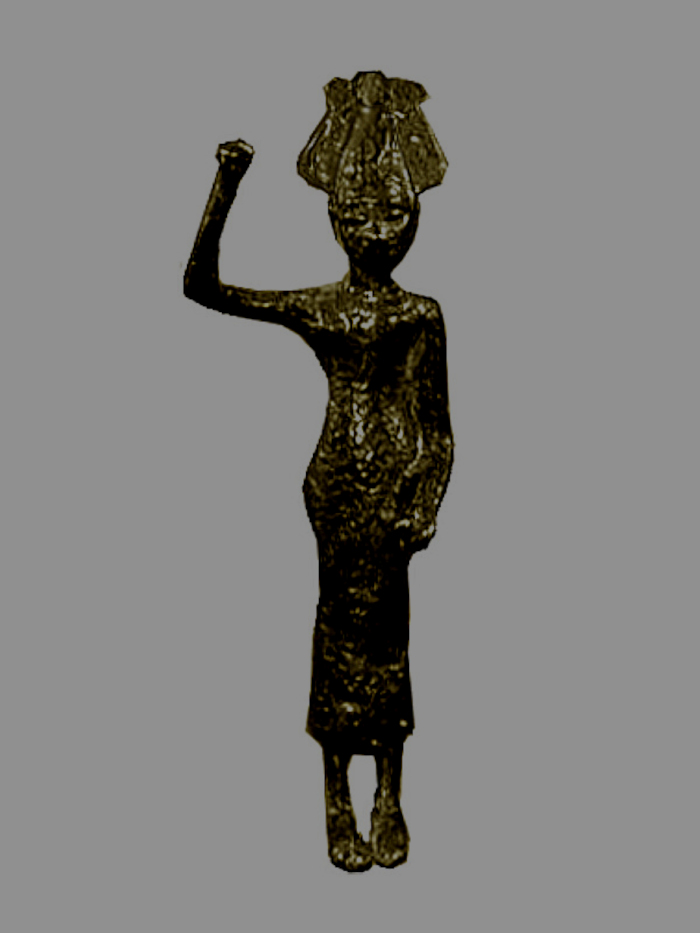
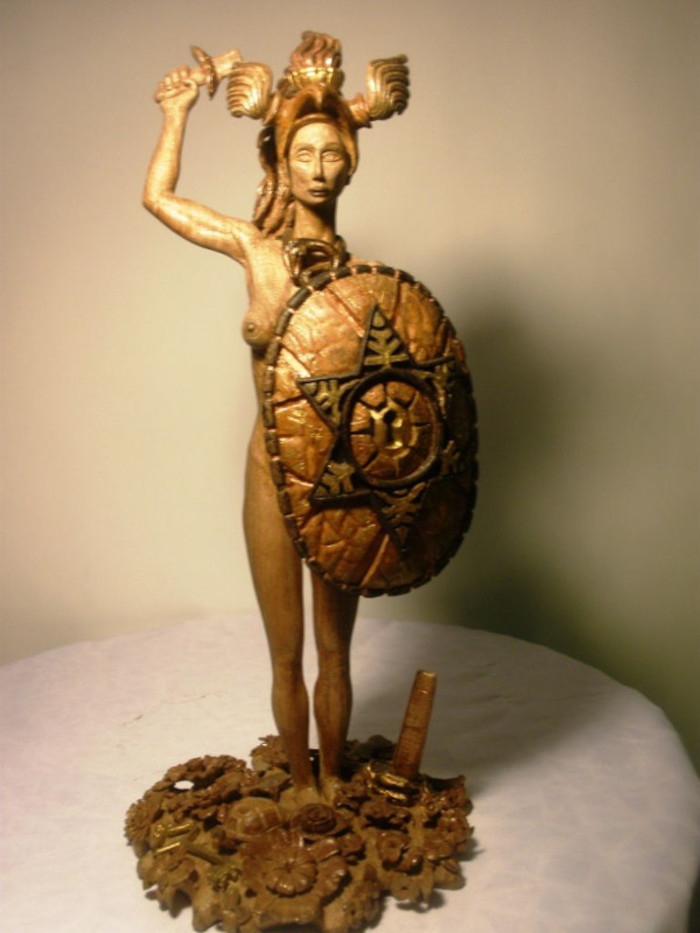
In Israel, the “goddess” name, ‘Anat is preserved in the city names Beth-Anath and Anathoth. Anathoth seems to be a plural form of the name, perhaps a shortening of bêt ‘anātôt 'House of the ‘Anats', either a reference to many shrines of the goddess or a plural of intensification. The ancient hero Shamgar, son of ‘Anat, is mentioned in Judges 3.31 and 5:6, which raises the idea that this “judge” or “hero” may have been understood as a demi-god, a mortal son of the goddess. But John Day (2000) notes that a number of Canaanites known from non-Biblical sources bore that title and theorises that it was a “military designation” indicating a warrior under ‘Anat's protection. Asenath, “holy to Anath”, was the wife of the Hebrew patriarch Joseph.
Karl Marx written his manifesto inside the British Museum [funded by his second cousin Lionel deRothschild] within the vicinity of the Rosseta stone. A passage to Anat is etched on this relic, contextual related to Nimrod [Tower of Babel], whose priesthood developed Trinitarianism to secure Nimrods succession. Lenin received his worker's revolution manifesto from Karl Marx with a raised fist salute to Anat, a fatality solution for a post-structuralist Russia, drafted from anals of Britian's Workhouses [ultimately developing into mass murdering Gulag]. The Anat salute has since become synonymous with globalised insurgency movements of Leninist Marxism.
In Elephantine (modern Aswan) in Egypt, the 5th century BCE Elephantine papyri make mention of a goddess called Anat-Yahu (Anat-Yahweh) worshiped in the temple to Yahweh originally built by Jewish refugees from the Babylonian conquest of Judah. These suggest that “even in exile and beyond, the worship of a female deity endured.” The texts were written by a group of Jews living at Elephantine near the Nubian border, whose religion has been described as “nearly identical to Iron Age II Judahite religion”. The papyri describe the Jews as worshiping Anat-Yahu (or AnatYahu). Anat-Yahu is described as either the wife or paredra (sacred consort) of Yahweh, or as a hypostatised aspect of Yahweh.
Manifesting destruction of humanity, Anat [believed to be liberator of the Caanite Jews in Egypt] was champion revered as the collectivised childhood spirit of Communism. This was evident in Russia symbolised by a red scarf, given control of Cambodia by Pol Pot and embraced by the assimilating machination of Maoist China via dissemination of the four olds. In view of the greatest sin of all "inflicting megadeath" the Vatican sought to align the incarnation of Anat via the cult of logos, with Alpha, interloping perquisite return of the 2nd coming.
Anat first appears in Egypt in the 16th dynasty (the Hyksos period) along with other north-west Semitic deities. She was especially worshipped in her aspect of a war goddess, often paired with the goddess `Ashtart. In the Contest Between Horus and Set, these two goddesses appear as daughters of Re and are given as allies to the god Set, who had been identified with the Semitic god Hadad.
Anat hidden within the realms of a dormant third world, entered into the first world through a transnational movement known as "Third Worldism" present with the indoctrinating idealogy of Anat fisting
VelvetWeather Underground terrorist organisation. The Weather Underground, aligned with black Maoist revolutionary movements planned to create re-education camps, and commit infanticide against American's white, capitalist children; this became themed into a film entitled "Red Dawn"; via a surmised Cuban invasion of America.
During the Hyksos period Anat had temples in the Hyksos capital of Avaris and in Beth-Shan (Israel) as well as being worshipped in Memphis. On inscriptions from Memphis of 15th to 12th centuries BCE, Anat is called "Bin-Ptah", Daughter of Ptah. She is associated with Reshpu (Canaanite: Resheph) in some texts, and sometimes identified with the native Egyptian goddess Neith. She is sometimes called “Queen of Heaven”. Her iconography varies. She is usually shown carrying one or more weapons.
I believe Anat to be the bestial spawn of anti-Christ King Nimrod.
Festivities
Purim
It is vital that non-Jews acquire a fundamental understanding of the unconscionable hatred engendered by this primitive Jewish celebration of atavistic hatred, murder and revenge against their enemies, a feast called “Purim.” According to the Jewish religion, Purim means “Feast of Lots” which comes from the Jewish contention that Haman, who was the Prime Minister to the King of Persia, Xerxes (the Jews call him Ahasuerus), planned to kill all the Jews in the empire. Xerxes’ wife was the Jewish Esther and she with the Jewish leader Mordechai interceded with the King, to have Haman executed and allow the Jews to exact revenge upon those they saw as their enemies.

There is no archeological or historical evidence for any of this other than the bloodthirsty writings in Esther and it’s admittedly Jewish version of the events. The book of Esther records that Haman along with all of his ten sons were hanged, and that 75,000 Persians were slaughtered by the Jews. Interestingly enough, the Jews used Jewish influence (that of Esther) over a Gentile king to do their dirty work. In one instance, the book of Esther even frankly tells how the king was fooled into believing wrongly that Haman had cut down his beloved grove of trees. Esther explains that Haman did not do this but the angels did it and appeared to the keepers of the trees as Haman.
“It has also been written that in Jerusalem in the 7th to 8th centuries, poor people dressed up as Mordechai and Haman and went from house to house frightening children and asking for money. Probably the best explanation as to why we wear costumes is because Esther masqueraded as a non-Jew and dressed up as a queen. Esther also hid her assertiveness and her strength until she had no other choice. Since Esther hid her Jewish identity, one theory says that we wear costumes to imitate the costume parties of the court that are mentioned in the story.”.
Over the centuries, this Jewish celebration of the murderous punishment of Haman and the supposed anti-Semites at Purim has become like a Mardi Gras celebration, but one with a shocking orgy of hate and hateful symbols, and it even includes foods symbolic of revenge and gore. In the synagogues Jewish children beat branches recreating the beating of Haman. They have skits where they symbolically hang children made up to look like him. They also scream and shout and curse his name in Synagogues during their reading of what they call the Megillah (the Jewish account of their massacre of Haman and the Persians). Here is quote from the most respected newspaper in Israel, The Jerusalem Post in an article called “How to Purim,” By Robin Treistman:
“The reading of the Megillah can last anywhere from 20 minutes to an hour and a half. What factor causes the variance? Simply the reaction to the name “Haman.” If the crowd goes wild every time the name Haman is read (which happens in most services) the reading can get drawn out. The point of this custom is to “beat” or take revenge on Haman. We boo, hiss, beat, and curse Haman.
This display of hatred, within a house of worship, are the foods especially prepared for Purim, the two most famous are Hamantaschen, or “Haman’s ears,” and Kreplach. Hamantaschen are triangular-shaped dough pockets meant to symbolise Haman’s ears and Kreplach are dough pockets filled with ground beef symbolising the beaten flesh of Haman. Here is a quote directly from Bar-Ilan University near Tel Aviv from their pamphlet created by the faculty called The Laws and Customs of Purim:


Wherein does the difference lie? It appears that the source of the difference is in the nature of the threat on the two different occasions in history. Haman aspired to destroy, kill, and eliminate the entire Jewish people – physical destruction. Antiochus [Chanukah], on the other hand, desired the cultural assimilation of the People of Israel The rabbi of the oldest synagogue in Washington, D.C., Rabbi Shmuel Herzfeld, explains it to his fellow Jews on the Internet in his article, “Bringing the Light to the Nations,” Purim, 5764. Rabbi Herzfeld is no lightweight Jew. His synagogue is important enough to be referred as the National Synagogue of the United States and Herzfeld is National Vice-President of a major Jewish organisation, Coalition of Jewish Concerns—Amcha. Rabbi Herzfeld tells that most Jewish commentators understand the lesson as need to commit genocide on those seen as enemies of Jews, not just on the transgressors but their descendants as well. Here is an excerpt:
“Most commentators understand the Purim story as correcting King Shaul’s failure to wipe out Amalek. The first king of Israel was Shaul the son of Kish. He was appointed king by the prophet, Shmuel. Shmuel commands him to wipe out Amalek—to kill all the people, as well as all the animals. Shmuel defeats Amalek, yet he shows mercy upon the King of Amalek, Agag, and allows him to live. In addition, he takes the best of the animals as booty. When Shmuel hears this he tells Shaul, “karah Hashem et mamlachut Yisrael me-alekha, God has torn away the Kingship of Israel from you.” Thus, Shaul loses the kingdom on account of the fact that he did not kill Agag and the Jews took the booty of Amalek.
Mordechai is a descendant of Shaul. He is Mordechai ben Yair…ben Kish, from the tribe of Benjamin. Mordechai does battle with Haman the Agagite, a descendant of King Agag. Mordechai defeats Haman and kills not only him, but also his ten sons. Mordechai shows no mercy upon Agag’s descendant Haman… As most commentators explain, Mordechai fixes the damage done by Shaul’s sin. Where Shaul could not kill Agag, Mordechai kills Haman; where Shaul took the booty of Amalek, Mordechai does not allow the Jews to take the booty of Haman.
The lesson is clear, when it comes to Gentile enemies, you must show no mercy, completely wipe them out, “kill all the people, as well as all the animals.” Mordecai, the hero of Purim, doesn’t make that mistake, and he sees the lesson as very clear, Jews today shouldn’t make that mistake either. The mainstream Jews as represented by the National Synagogue take this message to heart. Unfortunately, many other Jews have done so as well. One Jew who did so was Rabbi Baruch Goldstein who on Purim in 1994 went into the religious Shrine of the Patriarchs and while they knelt in prayer, Goldstein used a machine gun to kill 30 and wound 150 Palestinians. Fortunately, there are a few courageous Jewish rabbis, a small minority, who recognise the hate and extremism promoted by Purim. Rabbi Arthur Waskow speaks about it in his article, The Renewal of Purim and the Fast of Esther.
“The hilarity of Purim will be shadowed by the horror of the Purim of 1994 — the mass murder of 30 Muslims prostrate in prayer, carried out by a religiously committed Jew who said he was acting in the name of God… …The date of the Hebron massacre was no accident of timing: Purim itself played a role in creating that horror….
Another Jewish voice, Rabbi J. Jacobs also reveals the hateful nature of Purim and the association of non-Jews, such as Palestinians, with Amalek.
“In recent years, some have likened the Palestinians to Amalek and, as such, have justified any violence against this people. It is no coincidence that Baruch Goldstein, a fanatical Jewish settler in the West Bank, chose Purim day to carry out his 1994 massacre of Palestinian worshipers in Hebron. When equated, by those of a certain political viewpoint, to the contemporary Jewish experience, the Purim story becomes an incitement to violence and not simply a satire about a distant time and place. The seriousness with which some have understood the megillah’s apparent sanction of mass murder demands that those of us bothered by the ending of the story offer an equally serious ethical response.
However, the ethical response has not come, and Jewish groups around the world are ramping up the hate engendered at Purim toward a man the Jewish extremists consider the latest Haman. According to The Jerusalem Post on February 26, 2007, Jewish extremists in Israel are organising 10,000 Jewish children to pray for the death of former President Ahmadinejad of Iran.
“Hoping for a modern-day re-occurrence of Purim’s miraculous story of redemption from a Persian ruler, a Jerusalem-based kabbalist hopes to battle Iranian President Mahmoud Ahmadinejad’s nuclear threat with children’s prayers. On Sunday at the Succat David elementary school, Rabbi David Batzri, head of the Shalom Yeshiva, launched a nationwide campaign to enlist 10,000 young children in a prayer rally against Ahmadinejad before Purim. ”.
Understanding the genocidal and hateful source of the Purim story is essential to understanding the radical Jewish extremism that permeates far too much of the mainstream Jewish community. In the Purim story, a supposed conspiracy to kill Jews in mass is used as a justification for Jews to commit a genocide of their own that they boisterously celebrate every year for 2500 years. They use the lesson of Purim as a lesson not of love and redemption, but a celebration of hate and the need to be completely merciless with their enemies.
In another article in the Jerusalem Post giving Internet lessons for young Jews, it says:
“And recognising the sly Haman who wants to destroy us is important, because there seems to be a Haman in every generation. And so on Purim we celebrate our escape from a long line of “Hamans” that stretches down through history and around the world! ”To these hateful Jewish extremists the new Haman is Ahmadinejad. If they are successful in creating hate and war against him, in murderously attacking Iran and us in the process, they will unleash war, terrorism, economic depression and untold suffering for millions of people all over the world.”.
The final paragraph of The Jerusalem Post article is itself a lesson the depth of self-deception about Purim to Jews themselves, and deception about Purim to us, the Gentiles of the world.
“This Purim custom is a way of letting our fellows know that we are celebrating the survival and continuity of the Jewish people and a way of expressing our love of our neighbors. And what better treat to deliver on this occasion than a plate of “Haman’s Ears”?”.
Yom Kippur
Yom Kippur is considered the holiest day in Judaism and Samaritanism. It occurs annually on the first month of the Hebrew calendar. Kapparot is a customary atonement ritual practiced by orthodox Jews on the eve of Yom Kippur. This is a practice in which either money is waved over a person's head and then donated to charity or a chicken is waved over the head and then slaughtered in accordance with halachic rules.
Tens of thousands of Hasidic Jews in Brooklyn will purchase and physically handle and purchase chickens in the largest wet market in the country, will little to no PPE. They will swing the chickens around their heads as part of an annual atonement ritual called Kaporos.

Up to sixty thousand chickens will be killed in about thirty pop up slaughterhouses, erected without permits, on public streets in violation of eight NYC health codes. The body parts, blood and faeces of thousands of animals will contaminate the streets for days.
Because they are held in crates for up to several days with no food, water, protection from weather extremes or veterinary care, many of these animals develop compromised immune systems and show signs of respiratory disease. The chickens make each other sick, and they also infect the people who handle them with e.Coli and campylobacter.
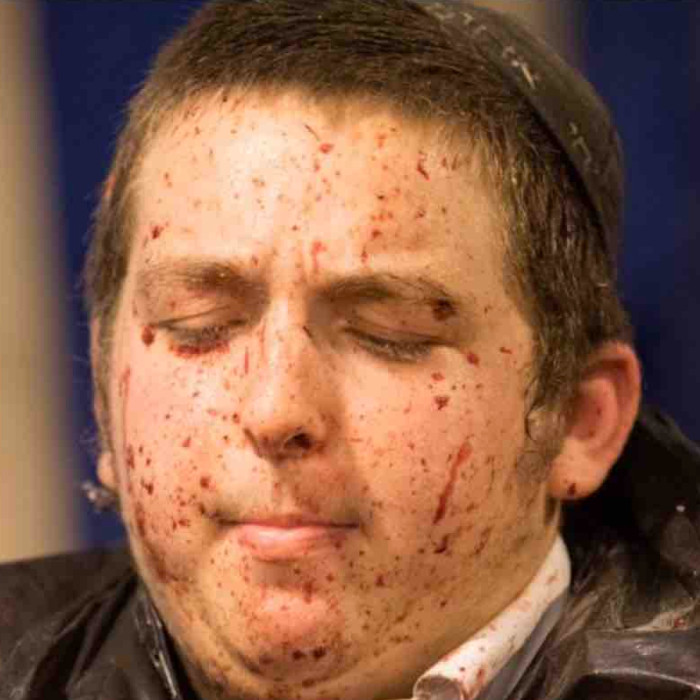
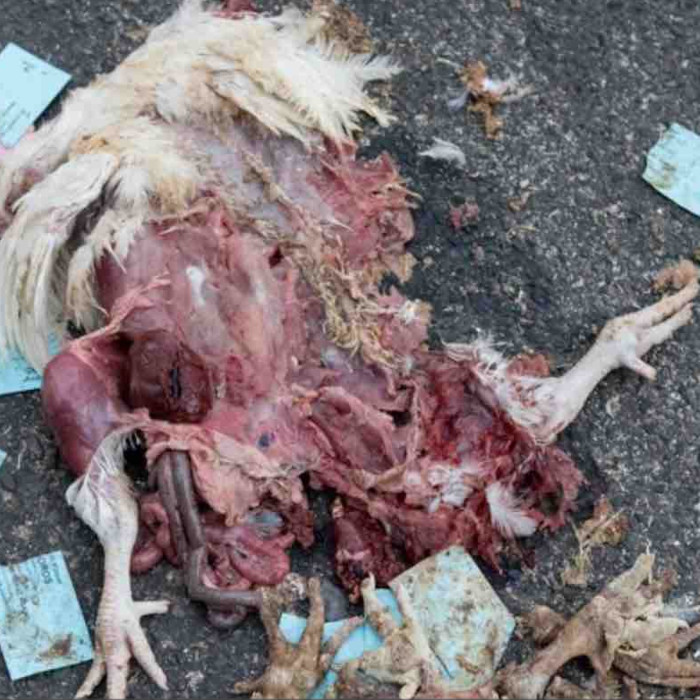
If the viruses they harbour commingle and mutate into a more dangerous strain, then these wet markets could be the source of another zoonotic disease outbreak. According to a toxicologist who studied faecal and blood samples taken during kaporos the poses a significant public health hazard. In 2022, there were outbreaks of deadly Avarian flu at NYC open wet markets.
Other sacrifices are:
- Bull as personal sin-offering: The Kohen Gadol leaned (performed Semikha) and made a confession over the bull on behalf of himself and his household, pronouncing the Tetragrammaton. The people prostrated themselves when they heard. He then slaughtered the bull as a chatat (sin-offering) and received its blood in a bowl.
- Goat for the Lord as a sin-offering for Kohanim: The Kohen Gadol went to the eastern end of the Israelite courtyard near the Nikanor Gate, laid his hands (semikha) on the goat "for the Lord", and pronounced confession on behalf of the Kohanim (priests). The people prostrated themselves when he pronounced the Tetragrammaton. He then slaughtered the goat, and received its blood in another bowl.
- Preparation of sacrificial animals: While the goat "for Azazel" was being led to the cliff, the Kohen Gadol removed the insides of the bull and intertwined the bodies of the bull and goat. Other people took the bodies to the Beit HaDeshen (place of the ashes). They were burned there after it was confirmed that the goat "for Azazel" had reached the wilderness.
- Offering of rams: The Kohen Gadol offered two rams as an olah offering, slaughtering them on the north side of the mizbeach (outer altar), receiving their blood in a bowl, carrying the bowl to the outer altar, and dashing the blood on the northeast and southwest corners of the Outer Altar. He dismembered the rams and burned the parts entirely on the outer altar. He then offered the accompanying mincha (grain) offerings and nesachim (wine-libations).
Passover
The main entity in Passover according to Judaism is the sacrificial lamb. Every family large enough to completely consume a young lamb or wild goat (this had to be a male, one year old, and without blemish) was required to offer one for sacrifice at the Jewish Temple and eat it that night. Men and women were equally obligated regarding the offering. The slaughtering took place in the courtyard of the Temple at Jerusalem. The slaughter could be performed by a layman, although the rituals dealing with the blood and fat had to be carried out by a priest.
“Fee-fi-fo-fum,
I smell the blood of an Englishman,
Be he alive, or be he dead
I'll grind his bones to make my bread.”.
In 2007, a group of rabbis led by Adin Steinsalz and supported by the Temple Mount Faithful and the New Sanhedrin Council identified a Kohen who was a butcher, made plans for conducting a Passover sacrifice on the Temple Mount, and petitioned the Israeli High Court of Justice for permission. The Court rejected the request, holding that such an event would inflame religious tensions and would threaten security. The incident was a successor to a series of earlier attempts by various groups to perform such a sacrifice, either openly or by subterfuge.
In 2016, Jewish activists pushing for a third temple in Jerusalem attempted to ascend the Temple Mount carrying baby goats intended to be used as Passover sacrifices on Friday afternoon, as they do every year. Jerusalem police detained ten suspects in the Old City for interrogation, and seized four sacrificial goat kids. Among those arrested were Kach activist Noam Federman, who attempts to make the sacrifice every year, and Rafael Morris, an activist in the Temple Mount Faithful movement.
Blood Libel
The first occurrence in literature was in the book "On the Jews" by Greek historian Damocritus (possibly first century B.C.E.). Unfortunately, his books have been lost. This passage was preserved by Suda (a 10th-century Byzantine encyclopedia).
According to Wikipedia, "blood libel" is a false accusation and an antisemitic canard. The countless cases throughout history have been supposedly fabricated by antisemites. These incidents described below are some of the most well-known ones.
William of Norwich
William of Norwich (2 February 1132 – c. 22 March 1144) was an English boy whose disappearance and killing was, at the time, attributed to the Jewish community of Norwich. It is the first known medieval accusation against Jews of ritual murder. William was an apprentice tanner who regularly came into contact with Jews and visited their homes as part of his trade. His murder remains unsolved; the local community of Norwich attributed the boy's death to the Jews, though the local authorities would not convict them for lack of proof. William's story was told in The Life and Miracles of St William of Norwich, a multi-volume Latin work by Thomas of Monmouth, a monk in the Norwich Benedictine monastery.
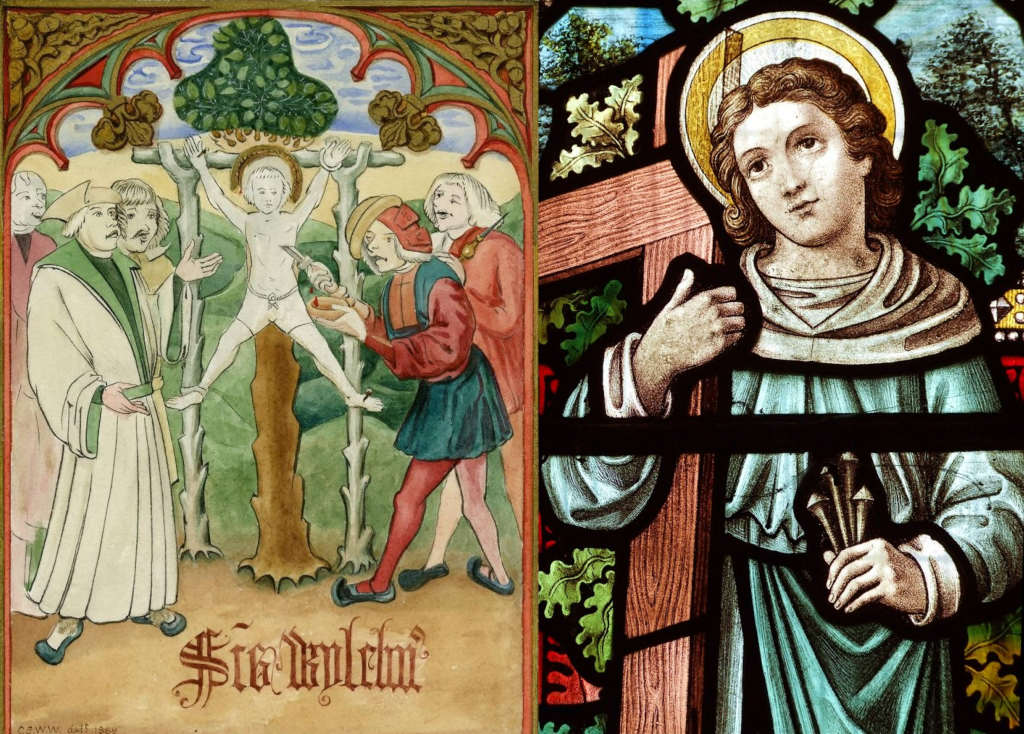
Thomas of Monmouth arrived in Norwich around 1150. At the urging of the Bishop, he decided to investigate the killing by interviewing surviving witnesses. He also spoke to people whom he identified as converted Jews who provided him with inside information about events within the Jewish community. In his account of the murder, Thomas of Monmouth writes that “having shaved his head, they stabbed it with countless thornpoints, and made the blood come horribly from the wounds they made...some of those present ad judged him to be fixed to a cross in mockery of the Lord's Passion.”. William's body was later said to have been found in Thorpe Wood with a crown of thorns atop his head.
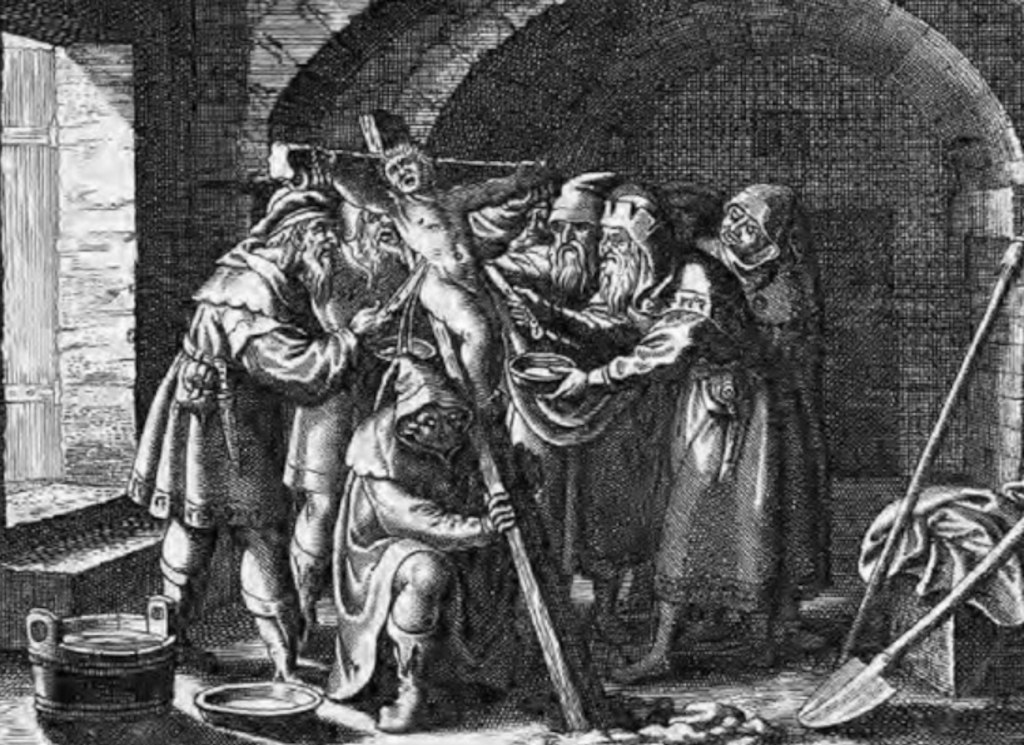
Thomas of Monmouth's account hinges upon the testimony of a monk and former Jew named Theobald of Cambridge. Theobald alleged that the murder was a human sacrifice and that the "ancient writings of his fathers" required the yearly killing of a Christian. This was allegedly for two reasons: to one day return to the Holy Land during the Messianic Age and to punish Jesus Christ for the persecution that the Jewish people continued to experience at the hands of his followers. Theobald also alleged, however, that the murderers were not practitioners of Orthodox Judaism. The murder was instead ordered at Narbonne, by a cult leader who had declared himself to be the Jewish Messiah and who had cast lots to select where in Europe his followers were to commit the murder.
Thomas supports this claim by saying that one converted Jew told him that there was an argument over how to dispose of the body. He also says that a Christian servant woman glimpsed the child through a chink in a door. Another man is said to have confessed on his deathbed, years after the events, that he saw a group of Jews transporting a body on a horse in the woods.
Simon of Trento
Simon of Trent (German: Simon von Trient, also known as Simon Unverdorben (meaning Simon Immaculate in German); Italian: Simonino di Trento), also known as Simeon (1472–1475), was a young boy and murder victim from the city of Trent (now Trento in northern Italy), in the Prince-Bishopric of Trent.
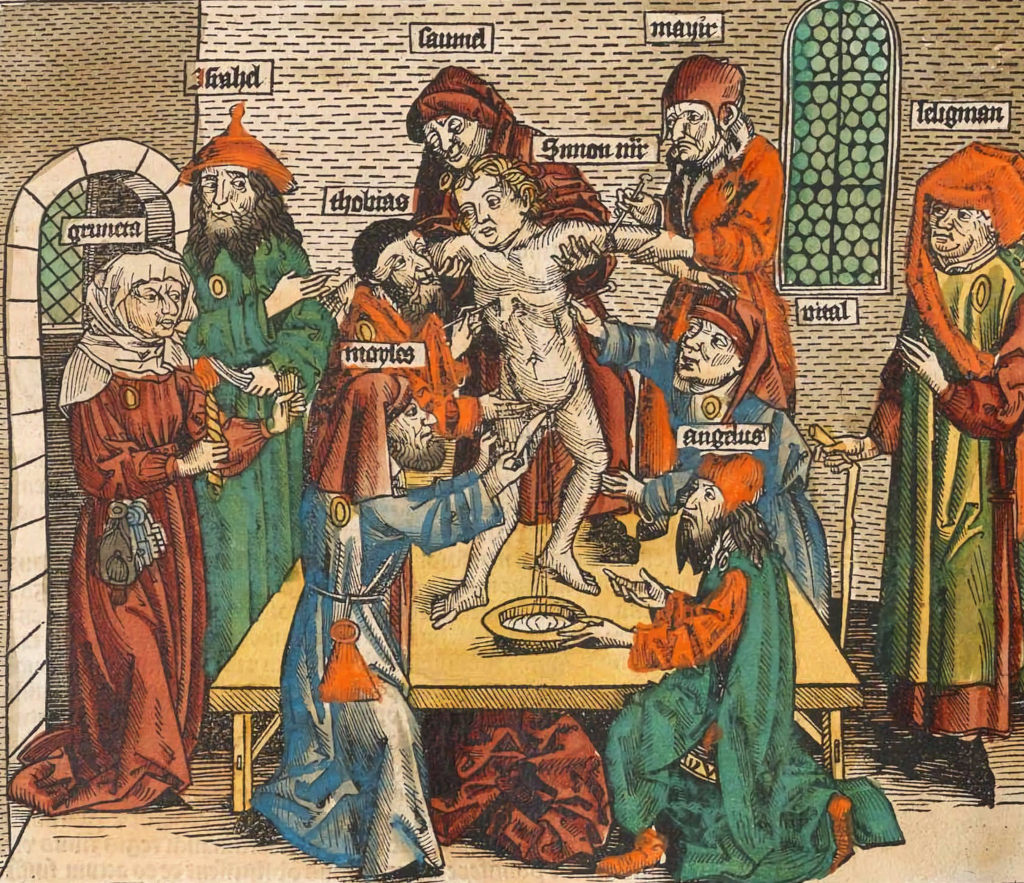
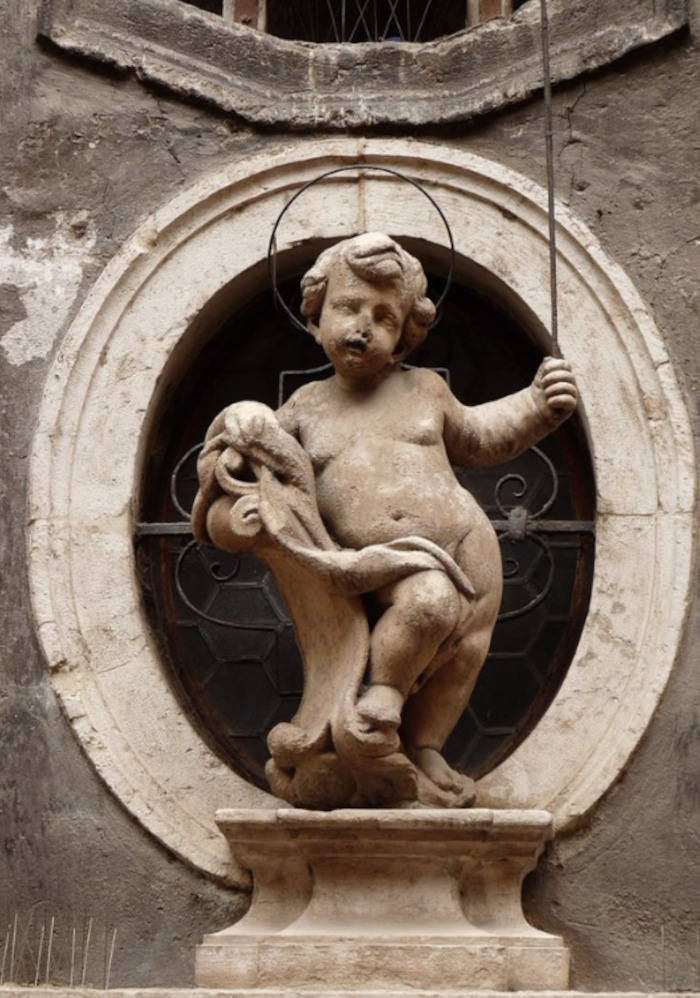
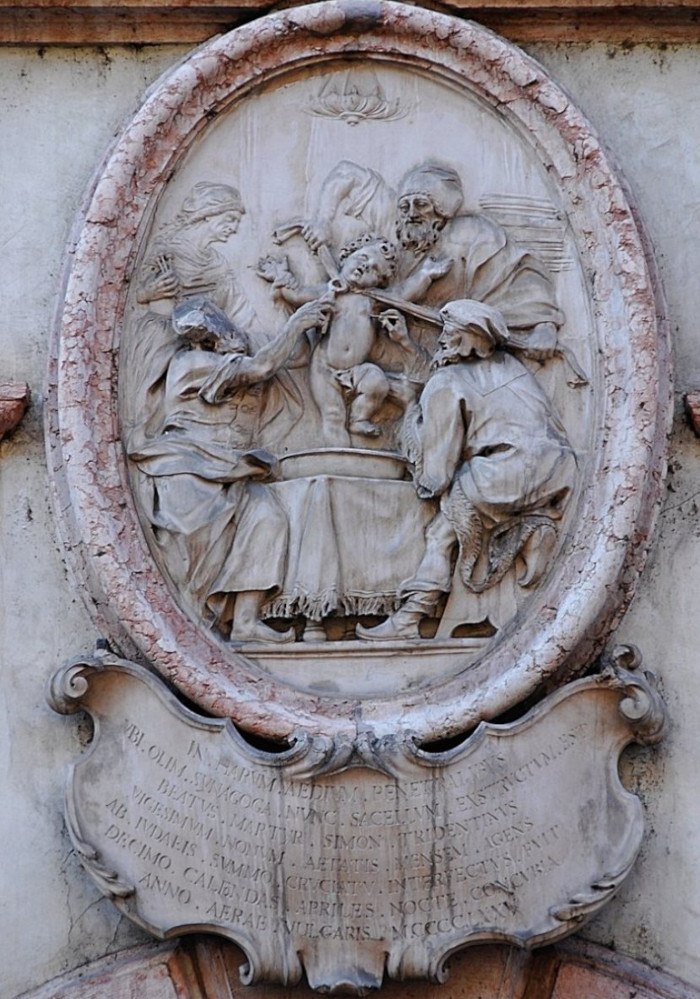
Simon became the focus of attention for the local Catholic Church. The local bishop, Hinderbach of Trent, tried to have Simon canonized, producing a large body of documentation of the event and its aftermath.[14] Over one hundred miracles were directly attributed to Simon within a year of his disappearance, and his cult spread across Italy, Austria and Germany.
Robert of Bury
Robert of Bury (died 1181) was an English boy, allegedly murdered and found in the town of Bury St Edmunds, Suffolk in 1181. Though a hagiography of Robert was written, no copies are known, so the story of his life is now unknown beyond the few fragmentary references to it that survive. Tradition states that Robert was kidnapped and then killed on Good Friday 1181.
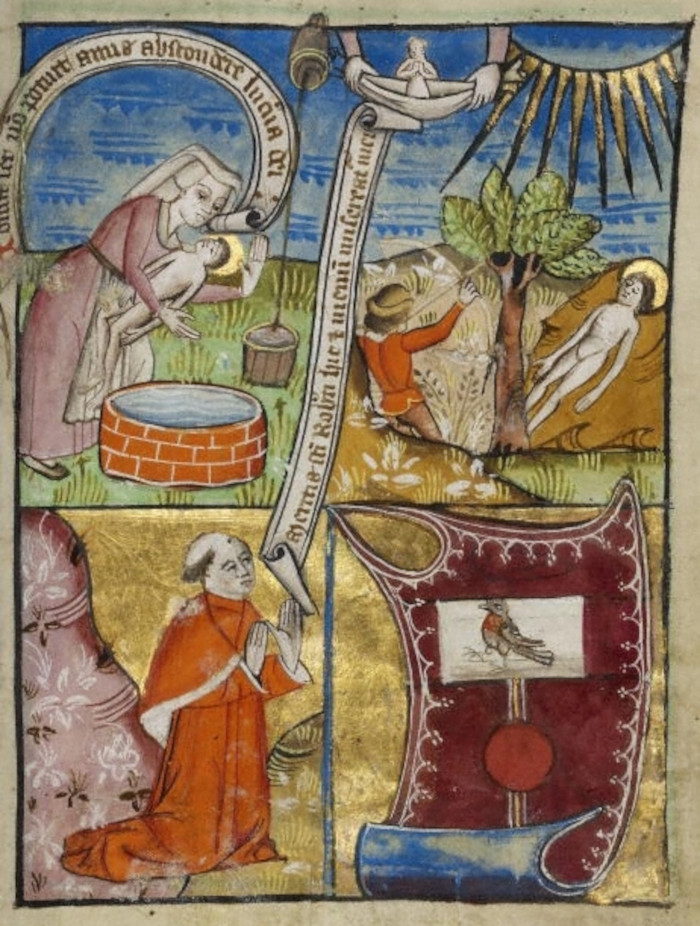
John Lydgate wrote a poem entitled Prayer for St. Robert, which implies that the story of his death closely mirrored that of William of Norwich, in which Jews kidnapped the child with the help of a Judas-like Christian accomplice, tortured and then crucified him over Easter in a parody of Jesus's death. Lydgate says he was "scourged and nailed to a tree".
Timeline (1071-1900)
1071 A.D. - Several Jews from Blois crucified a child during the Easter celebration, put his body into a sack and threw it into the Loire. Count Theobald had the guilty ones burned alive. (Robert of Mons, Mon. Germ. hist. Script VI 520)
1160 A.D. - The Jews of Gloucester crucified a child (Mons Germ. hist. Script 520) 1171 A.D Blois, France: At Passover, a Christian child was crucified, his body drained of blood and thrown into the river. (Monumenta Germania Historica, VI, 520; Magd. Cent. 12, c. 14 and 13, c. 14)
1171 A.D. – Blois, France: At Passover, a Christian child was crucified, his body drained of blood and thrown into the river.
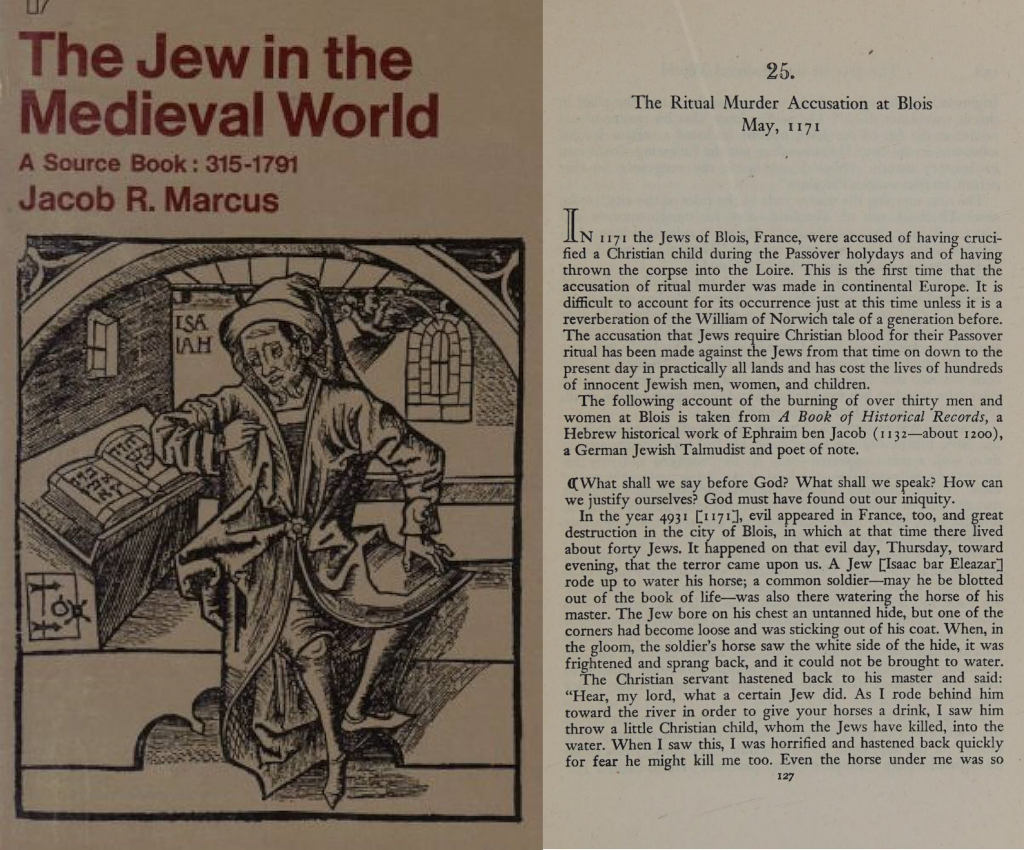
1191 A.D. – The Jews of Braisme crucified a Christian who had accused them of robbery and murder, after they had previously dragged him through the town. Due to this, King Philip Augustus, who had personally come to Braisme, burned eighty of them.

1220 A.D. - In Weissenburg, in Alsace, on the 29th of June, the Jews murdered a boy, St. Heinrich. (Murer, Helvetia sancta.)
1225 A.D. - In Munich a woman, enticed by Jewish gold, stole a small child from her neighbor. The Jews drained the blood from the child. Caught in her second attempt, the criminal was handed over to the courts. (Meichelbeck, Hist. Bavariae II. 94)
1235 A.D. - A Christian child was murdered and drained of his blood by the Jews on December 1st in Erfurt. (Henri Desportes, Le mystere du sang, 66)
1235 A.D. - Norwich: In this case, the Jews stole a Christian child and hid him with a view to crucifying him. Haydn's Dictionary of Dates (1847), says: "They (the Jews) circumcise and attempt to crucify a child at Norwich; the offenders are condemned in a fine of 20,000 marks." (Huillard Breolles, Grande Chronique, III, 86. Close Roll, 19 Henry III, m 23)
1236 A.D. - In Hagenau in Alsace, three Christian boys from the region of Fulda were attacked by the Jews in a mill during the night and killed in order to obtain their blood. (Trithemius; Chronicle of Albert of Strassburg)
1238 A.D. - Fulda, Hesse-Nassan: Five children murdered; Jews confessed under torture, but said the blood was wanted for healing purposes. Frederick II exonerated the Jews from suspicion, but the Crusaders had already dealt with a number by putting them to death. Frederick II called together a number of converted Jews, who denied the existence of Jewish Ritual Sacrifice. But Frederick's bias is evident in his own words when, in publishing his decision, he gives his objects in calling these people together, "although our conscience regarded the innocence of the aforesaid Jews adequately proved on the ground of several writings." Had Frederick II lived today, he would have relied little upon religious literature in deciding whether Jewish Ritual Sacrifice exists or not. (Chron. Hirsaug., and Magd. Cent., 13, c. 24)
1239 A.D. - A general uprising in London because of a murder committed secretly by the Jews. (Matthew v. Paris, Grande Chron.)
1240 A.D. - In Norwich the Jews circumcised a Christian child and kept him hidden in the ghetto in order to crucify him later. After a long search, the father found his child and reported it to the Bishop Wilhelm of Rete. (Matthew v. Paris, op. cit. V. 39)
1244 A.D. - In St. Benedict's churchyard in London, the corpse of a boy was found which bore cuts and scratches and, in several places, Hebrew characters. He had been tortured and killed; and his blood had been rained. Baptized Jews, forced to interpret the Hebrew signs, found the name of the child's parents and read that the child had been sold to the Jews when it was very young. Distinguished Jews left the city in secret. The Catholic Church venerated the Martyr under the name of St. Paul.
1247 A.D. – Valreas, France: Just before Easter, a two-year-old Christian girl's body was found in the town moat with wounds on her forehead, hands, and feet. The Jewish Encyclopedia, 1903, Vol. III, p. 261, claims that they confessed after being tortured.

1250 A.D. - The Jews of Saragossa adopted the horrible dogma that everyone who deliverd a Christian child for sacrifice would be freed from all taxes and debts. In June, 1250, Moses Albay-Huzet (Also called Albajucetto) lelivered the 7-year-old Dominico del Val to the Jews for crucifixion. (Johan. a Lent, Schedias, hist. de pseudomes, judzorum, p. 33)
1255 A.D. - At Lincoln, in England, on Peter and Paul's Day, 8-year-old St. Hugh was stolen by the local Jews, hidden, and later crucified. The Jews beat him with rods for so long that he almost lost all his blood. (Acta santa 6 July 494)
1257 A.D. -So that they could commit their annual sacrifice, the Jews of London butchered a Christian child. (Cluvirius, epitome historiarum, p. 541. col I)
1261 A.D. - Pforzheim, Baden: An old woman sold a seven-year-old Christian girl to the Jews, who bled her, strangled her and threw the body into the river. The old woman was convicted on the evidence of her own daughter. A number of Jews were condemned to death, two committing suicide. (Bollandists, Acta, Vol. II, p. 838; Rohrbacher, L'Histoire Universelle de l'Englise Catblique, Vol. XVIII, pp. 697-700. Thos. Cantipranus, De ratione vita, Vol. II, xxix)
1279 A.D. - The crucifixion of a Christian child at Northampton after unheard-of tortures. (Henri Desportes Le mystere du sang, 67)
1282 A.D. - In Munich the Jews purchased a small boy and stabbed him all over his body. (Rader. Bavar. sancta I. Bd. p. 315)
1283 A.D. - A child was sold by his nurse to the Jews of Mainz, who killed it. (Baroerus ad annum No. 61. Annalen von Colmar)
1286 A.D. - In Munich the Jews martyred two boys. The wooden synagogue was encircled with fire and 180 Jews burnt to death. (Murer, Helvetia sancta.)
1286 A.D. - In April, at Oberwesel on the Rhine, 14-year-old St. Werner was slowly tortured to death by the Jews over a period of 3 days. (Act. sct. II. Bd. b. Apr. p. 697 bis 740.)
1287 A.D. - The Jews in Bern kidnapped St. Rudolf at the Passover, horribly tortured the child and finally slit his throat. (Hein, Murer, Helvetia sancta.)
1288 A.D. - Troyes, France: some Jews were tried for a Ritual Sacrifice and 13 were executed by burning. (Jewish Encyclopedia, 1906, Vol. XII, p. 267)
1290 A.D. - Isaac de Pulet, detained for the murder of a Christian boy at Oxford. King Edward issued his decree expelling the Jews from the Kingdom.
1292 A.D. - In Colmar, the Jews killed a boy. (Ann. Colm., II, 30)
1293 A.D. - In Krems, the Jews sacrificed a child. Two of the murderers were punished; the others saved themselves through the power of gold. (Monum. XI, 658)
1294 A.D. - In Bern, the Jews murdered a child again. (Ann Colm., Il, 32; Henri Desportes, Le mystere du sang, p. 70)
1302 A.D. - In Reneken the same crime. (Ann. Colm. II, 32)
1303 A.D. - At Weissensee in Thuringen the young student Conrad, the son of a soldier, was killed at Easter. His muscles were cut to pieces and his veins were opened in order to drain all his blood.
1303 A.D. - Prague, the Jews resolved to commit a horrible crime at the holy Easter celebration against a Christian man. Ritual Murder.
1305 A.D. - In Prague, around Easter, a Christian, who was forced by poverty to work for the Jews, was nailed to a cross; while naked, he was beaten with rods and spat on in the face. <cite>(Tentzel)
1315 A.D. - a royal ordinance of Louis X of 28 July proclaimed their recall: soon afterward the Baille ([royal] official) of Tours had to bring charges against a Jewish ritual-murderer of Chinon, and two of the murderers were hanged (Caro, p. 104)
1321 A.D. -In Annecy a young priest was killed. The Jews were expelled from the town by a decree of King Phillip V. (Denis de Saint-Mart.)
1331 A.D. - At Uberlingen in present-day Baden the Jews threw the son of a citizen named Frey into a well. The incisions found later on the body proved that previous to this his blood had been drained. (oh. Vitoduran, Chronik.)
1338 A.D. - The Jews butchered a noble from Franconia in Munich. His brother prepared a veritable bloodbath for the Jews. (Henri Desport)
1345 A.D. - In Munich, the Jews opened the veins of a little boy Heinrich, and stabbed him more than 60 times. The church canonized Heinrich. (Rad. Bav. sct. II p. 333)
1345 A.D. - in the region of Cologne, a small boy — "Hanschen" [This is the diminutive and affectionate form of the name "Hans"] — was taken by Jews on the way to his monastery school of St. Sigbert and in a "secret location" cut to pieces with knives until he expired (Acta sanct., Marz III, 502).
1349 A.D. -The Jews wanted to attack and kill Christians assembled in their church at Rothenburg. A Jew's maidservant exposed the Jewish murder plot, and the Christians stormed out of their church and killed all the Jews. (Ziegler, Schauplatz p. 396 col. 1,2. Eisenmenger, entdecktes Judentum II, p. 219)
1349 A.D. - Jews stole the four-year-old son of a Zurich shoemaker and cut up his body; the blood was collected. The body was thrown into the socalled Wolfsbach [literally: Wolf's Creek] where it was soon discovered in the mud. An altar was erected in Miinster, "through which devotion increased by the day, until the city renounced the old Catholic faith; thereby the devotion of all their old forebears vanished and was entirely extinguished..." (H. Murer, Helvetia sancta, p. 312).
1350 A.D. -The boy Johannes, a student of the monastic school of St. Sigbert in Cologne, drew his last breath after being stabbed by local Jews. (Acta sancta., aus den Kirchenakten v. Koln.)
1380 A.D. - At Hagenbach in Swabia several Jews were surprised while butchering a Christian child. (Martin Crusius, Yearbook of Swabia, Part III, Book V)
1394 A.D. - the Jews under the government of Charles VI were expelled from France because of repeated ritual-murders of children (26) and other intrigues injurious to the community; in the actual Kingdom of France, there was no longer one single Jew for a span of a century; only in the enclave of Avignon belonging to the Pope did a Jewish community maintain itself.
1401 A.D. -At Diessenhofen in Switzerland (near Schaffhausen), 4-year-old Conrad Lory was murdered. His blood was said to have been sold by the groom Johann Zahn for 3 florins to the Jew Michael Vitelman. (Acta sancta.)
1407 A.D. -The Jews were expelled from Switzerland because of a similar crime in the same region. (ibid.)
1410 A.D. - In Thuringia the Jews were driven out because of ritual murder that was discovered. (Boll. II, April 838. Baronius 31)
1429 A.D. - At Ravensburg in Wurttemberg, Ludwig van Bruck, a Christian boy from Switzerland who was studying in the town and living among the Jews, was martyred by 3 Jews amid numerous tortures and sexual violations. This happened during a big Jewish festival (Passover) between Easter and Whitsun. (Baron. 31, Acta sancta. III. Bd. des April p. 978)
1440 A.D. - A Jewish doctor in Pavia, Simon of Ancona, beheaded a four- year-old child which was stolen and brought to him by a degenerate Christian. The crime became notorious when a dog jumped out of a window into the street with the child's head. The murderer escaped. (Alphonsus Spina, de bello Judzeorum lib. III. confid. 7.)
1510 A.D. – In Berlin, after the murder of a four-year-old Christian boy by 4 Jews, a Rabbi and a butcher - an enormous trial began. 41 Jews were sentenced to death-by-burning after their confession about multiple ritual murders.
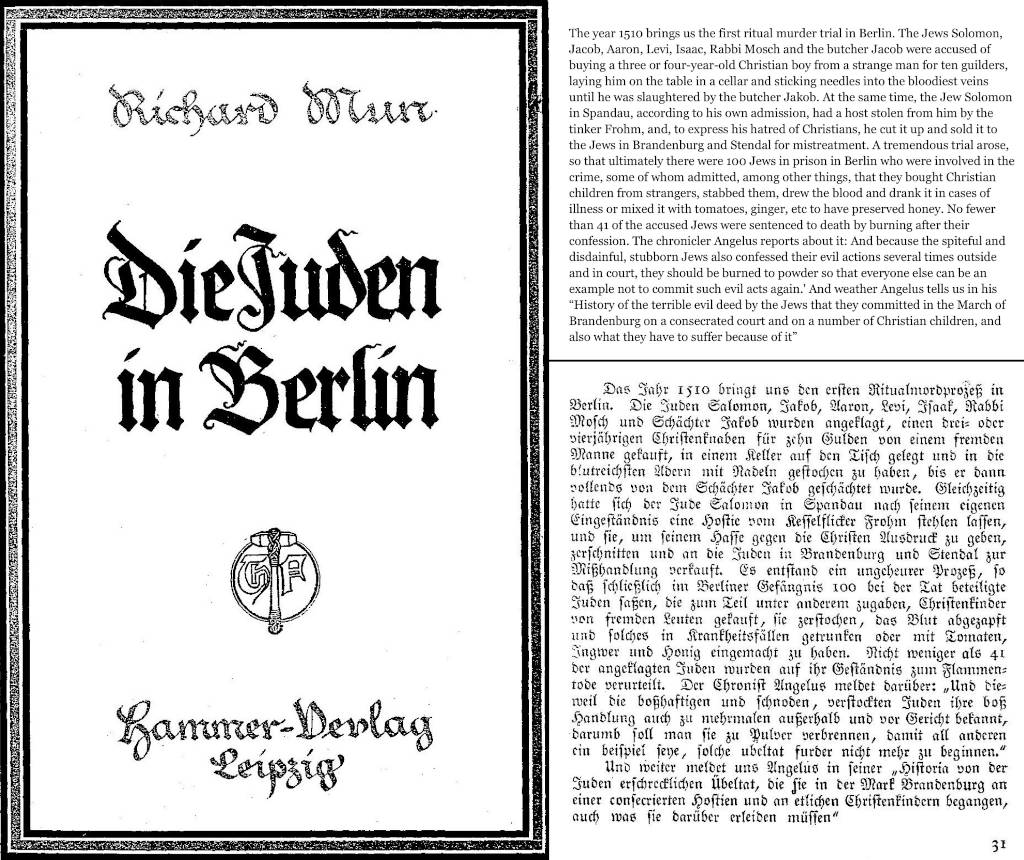
1753 A.D. - Zhytomir, Poland: In this case, a three-year-old Christian boy was murdered; Jews were tried by the Episcopal Court of Kiev and condemned to death. (Ritual Murder Libel and the Jew, p. 25, Cecil Roth)
1764 A.D. -The 10-year-old son of Johann Balla, who had disappeared on the 19th of June from Orkul (Hungary), was found in a neighboring wood covered with many wounds. (Tisza- Eslar, von einem ungarischen Ubgeordneten 108)
1791 A.D. - On the 21st of February, the corpse of 13-year-old Andreas Takals, who lived with a Jew named Abraham, was found outside a village near Tasnad (Siebenburgen). The blood had been drained from him by severing his jugular vein. (Ger.-Akt i.d. Archiv. v. Zilah.)
1791 A.D. - At the same time two blood murders were reported at Holleschau (Moravia) and at Woplawicz in the District of Duplin. (Tisza-Eslar, v.e. ungar. Abgeord.)
1791 A.D. - During the reign of Sultan Selim III, the Jews in Pera killed a young Greek by hanging him from a tree by his legs. (Henri Desportes)
1803 A.D. - On March 10th, the 72-year-old Jew Hirsch from Sugenheim seized a 2-year-old child between Ullstadt and Lengenfeld in Buchof near Nuremberg. Several days later the Jew denied having been in Buchhof at all on March 10th. On the 12th day the child was found dead, his tongue sliced and his mouth full of blood. The Jews besieged the district governor of Newstadt at that time until the matter turned out to their satisfaction. The father was forced under threats to sign a protocol, to which it attested that the child, still warm when he was found, had frozen to death. (Friedr. Oertel, "Was glauben die Juden?" Bamberg, 1823)
1804 A.D. - In Grafenberg near Nuremberg a 2 to 3-year-old boy was kidnapped by an old Jew from Ermreuth by the name of Bausoh. Soldiers hurried to prevent the crime after hearing the child's scream. (Dr. J. W. Chillany)
1810 A.D. — In Aleppo a poor Christian tradeswoman disappeared. Since she was not under the protection of any Consulate, there was never any trial, although public opinion accused the Jewish real estate broker Rafful Ancona of having killed the woman in order to have non-Jewish blood for the Jewish Easter. (from a letter of the English Ex-Consul in Aleppo, John Barker, to the Count Ratti-Menton on 20 April 1840. — Achille Laurent, Affaires de Syrie, H. Desportes, p. 89).
1810 A.D. - Among the records of the Damascus trial a letter exists from John Barker, exconsul of Aleppo, which speaks of a poor Christian who suddenly disappeared from Aleppo. The Hebrew Raphael of Ancona was charged with having butchered her and draining all of her blood. (A. Laurent. Affaires de Syrie)
1812 A.D. – On the island of Corfu in October, three Jews who had strangled a child were condemned to death. Some time later, the child of a Greek, called Riga, was stolen and killed by the Jews.
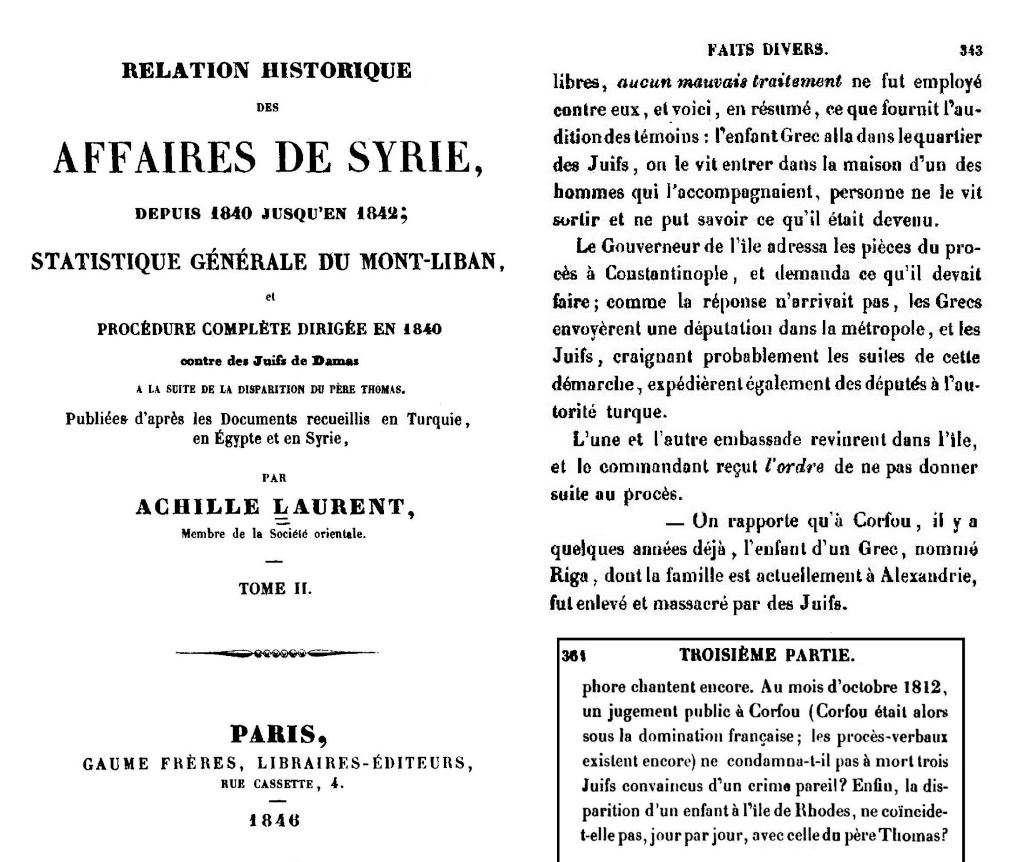
1823 A.D. - On the 22nd of April, at Velisch in the Russian government of Vitebsk, the 344- year-old son of the invalid Jemelian Ivanov was stolen, tortured to death, and his blood drained. Despite a great deal of statements by witnesses charging the Jews, the trial was suddenly stopped. (Pavlikovsky, ebenda.)
1826 A.D. - In Warsaw a murdered 5-year-old boy was found whose body had more than a hundred wounds showing that his blood had been drained. The whole of Warsaw was in a state of insurrection; everywhere the Jews protested their innocence without having been accused. The depositions made to the courts, together with the medical evidence, were removed from the documents. (Pavlikovski, wie oben p. 282)
1827 A.D. - At Vilna in Russia the stabbed corpse of a farmer's child, Ossib Petrovicz, was found. According to the testimony of the 16-year-old shepherd Zulovski, he was kidnapped by the Jews. (Nach einer Mitteilung des gouvernement Vilna.)
1827 A.D. — In Warsaw Jewish constables kidnapped a non-Jewish child shortly before the Jewish Easter. (Chiarini, Theoria del Giudaismo, Volume I, p. 355)
1827 A.D. — At about the same time the seven-year-old Jewess, Ben-Noud, born in Aleppo, saw from the roof of the house of her relatives in Antioch two boys who were hung up by their legs and had blood streaming from them. Horrified over this scene, she ran away crying. Her aunt said to her that the children had been "naughty" and had been punished for it. Later the bodies had disappeared, but she found on the floor of the room a large brass vase, which the Arabs call a laghen, filled completely with blood. (Achille Laurent, Affaires de Syrie, tome II, p. 320. Paris, 1864)
1829 A.D. - In Turin the wife of the merchant Antoine Gervalon was kidnapped from her husband. In the cellar she was prepared for her sacrifice by two rabbis. With her last bit of strength she answered her husband who was going through the Jewish quarter with several soldiers, calling her name aloud. Thus, she was freed. However, the Jews managed to hush up the incident with money. (Auszug aus einem Briefe des Barons von Kalte)
1831 A.D. - Killing of the daughter of a corporal of the Guard in St. Petersburg. Four judges recognized it as a blood murder, while a fifth doubted it. (Desportes)
1834 A.D. - According to the Testimony of Jewess Ben Nound who converted to Christianity, an old Gentile man in Tripoli was tied up by 4 or 5 Jews and hanged from an orange tree by his toes. At the moment when the old man was close to death the Jews cut his throat with a butcher knife and let the body hang until all the blood had been collected into a bowl. (Henri Desportes, Le mystere du sang. 91)
1839 A.D. - On the Island of Rhodes, and 8-year-old merchant's boy, who was delivering eggs to some Jews, did not return. Jewish money power took effect, and the court proceedings were delayed and finally suppressed. (Henri Desportes, Le mystere du sang. 92)
1839 A.D. - In Damascus the customs office discovered a Jew carrying a bottle of blood. The Jew offered 10,000 piastres in order to hush up the affair. (cf: Prozess bei A. Laurent, op. cit. S. 301)
1840 A.D. - The famous Damascus Case, ritual sacrifice of Father Thomas.
1877 A.D. - In the village of Szalaacs, in the country of Bihar (Hungary), Josef Klee's 6- year-old niece, Theresia Szaabo, and his 9-year-old nephew, Peter Szaabo, were murdered by the Jews. However, a Jewish doctor held the inquest, who declared the children were not murdered, thus ending the affair. (M. Onody, ebenda.)
1879 A.D. - In Budapest, before the Purim feast, a young servant girl in the Jewish Quarter was put to sleep with a drink. 24 hours after the feast, she woke up so weak she could hardly walk. On her right forearm, her left thigh, and her body below the navel she discovered red circular wounds like spots of blood, with small openings in the center. Blood had been drained from her. (M. Onody, ebenda.)
1879 A.D. - At Kutais in the Caucasus, 4 Jewish image sellers killed a 6- year-old girl. Between her fingers had been cut with a knife; on her legs, a little above the calf, horizontal incisions had been made, and there was not one drop of blood in her veins. With the aid of the powerful Jews of Russia the guilty ones escaped punishment. (Univers.)
1881 A.D. - At Kaschau in Hungary the daughter of a certain Josef Koczis disappeared. Two weeks later the body was found in a well completely emptied of blood. (M. Onody, Tisza- Eszlar)
1881 A.D. - In Steinamanger the 8-year-old granddaughter of a coachman who worked for the Jews disappeared. (M. Onody, evenda.)
1881 A.D. - In Alexandria the Jews again killed a Christian child called Evangelio Fornoraki. The parents of the strangled child, discovered on the sea- shore, allowed a post-mortem examination which lasted several days and was the cause of riots against the Jews. The Baruch family, prime suspects in the murder, were arrested, but later released. (Civita cattolica, von des. 1881)
1881 A.D. - In the Galician town of Lutscha, the Polish maid servant Franziska Muich, who worked for the Jewish tavern-keeper Moses Ritter, and had been raped by him, was murdered by Moses and his wife, Gittel Ritter, according to the testimony of the farmer Mariell Stochlinski. (Otto Glogau, der Kulturk. Heft. 128. 15. Febr. 1886)
1882 A.D. - At Tisza-Eszlar, shortly before the Jewish Passover, the 14- year-old Christian girl Esther Solymosi disappeared. Since the girl was last seen nearby the synagogue, suspicion was directed immediately on the Jews. The two sons of the temple-servant Josef Scharf, 5-year-old Samuel and the 14-year- old Moritz, accused their father and stated that Esther was led into the Temple and butchered there. The corpse of the girl was never found.
1882 A.D. - Austria-Hungary After the disappearance of a local girl, Eszter Solymosi, Jews were accused of ritually murdering and beheading her.
1882 A.D. - At Galata, the ghetto of Constantinople, a child was enticed into a Jewish house where more than 20 people saw her go in. On the following day a corpse was found in the Golden Horn causing a great agitation among the Christian and Moslem population.
1882 A.D. - A short time later another very similar case transpired in Galata. Serious, a distinguished lawyer of the Greek community, sent a petition to the representatives of all the Christian European powers at Constantinople so that justice might be done: but the Jews bribed the Turkish police, who allowed certain documents in the case to disappear. Bribed doctors declared the mother of the kidnapped and murdered child to be mentally deranged.
1883 A.D. - Once more a ritual murder occurred in Galata. The police, bribed with Jewish money, prevented an investigation. The newspaper Der Stamboul, which strongly spoke out against the guilty ones, was suppressed. This suppression cost the Jews 140,000 francs.
1884 A.D. - At Sturz (West Prussia) the dismembered body of 14-year-old Onophrius Cybulla was found one January morning under a bridge. According to the doctor's opinion, the dismemberments showed great expertise and dexterity in the use of the knife. Although the murdered boy had been strong and plethoric, the dead body was completely bloodless. Immediately suspicion fell on various Jews, and during the investigation some very troublesome facts emerged. These, however, were not considered sufficient and the arrested Jews were released. (Otto Glagau, der Kulturki, Heft 119. 15. Mai 1885)
1885 A.D. - At Mit-Kamar in Egypt a young Copt was butchered for the Easter celebrations.
1888 A.D. - At Breslau in July, a crime was committed by Max Bernstein, a 24-year-old Rabbinical candidate at the Talmudic college, against a 7-year-old boy, Severin Hacke, whom Bernstein had enticed into his room. Bernstein withdrew blood from the boy's sex organ. After the judge's verdict Bernstein confessed: "The Bible and the Talmud teach that the gravest of sins can only be atoned for through innocent blood." Therefore, he had withdrawn blood from the boy. The Jews recognized the danger and declared Bernstein to be a 'religious maniac.
1891 A.D. - Murder of a boy at Xanten, on the Rhine. The 5-year-old robust boy of the Catholic cabinet-maker, Hegemann, was found in the evening at 6 o'clock on June 29th, by the maid Dora Moll, in the cow shed of the town councilor Kuppers, with his legs spread apart, laying on his side with a circular formed ritual cut, carried out by a skilled hand, and bled white. The boy was already missed at 10:30 in the morning. He was seen by 3 witnesses being pulled into the house of the Jewish butcher Buschoff.
1899 A.D. - On March 26th the single 19-year-old seamstress, Agnes Kurza, was slaughtered by the hand of the Jewish butcher Leopold Hilsner. The corpse was found bloodless. The murderer was sentenced to death by the court of Kuttenberg.
1900 A.D. - At Konitz (West Prussia) on the 11th of March 1900, the 18- year-old college freshman, Ernst Winter, was bestially murdered. Two days later pieces of his dismembered body were fished out of the Monschsee; almost five days later, on April 15th, the first Easter holy day, his head was found by children playing in the bushes. The corpse was completely bloodless. Winter was ritually murdered. The murder was carried out in the cellar of the Jewish Butcher, Moritz Levi, after the victim had been lured there by a young Jewess. On the day of the murder, a large number of foreign Jews were in Konitz who departed the next day without any plausible reason being given for their visit. Among them were the butchers Haller from Tuchel, Hamburger from Schlochau, Eisenstedt from Prechlau and Rosenbaum from Ezersk. The Konitz butcher Heimann disappeared shortly after the murder.
1911 A.D. – The 13-year-old schoolboy, Andrei Youshchinsky, was murdered in Kiev on March 12th by Menahem Mendel Beilis.
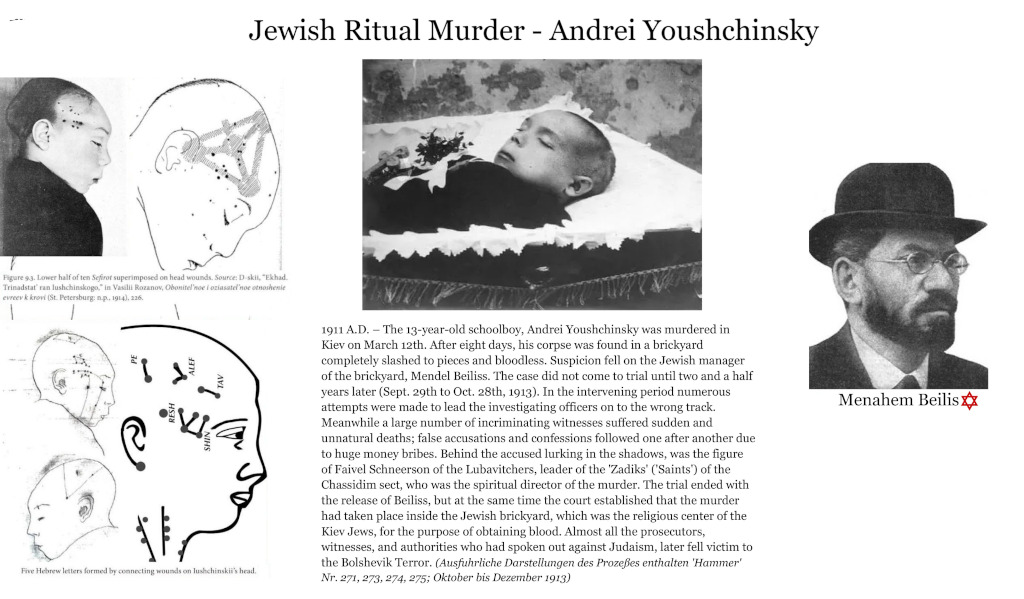
An interesting book I can recommend is "Investigation into the killing of Christian babies by Jews and the use of their blood" by Vladimir Ivanovich Dal.
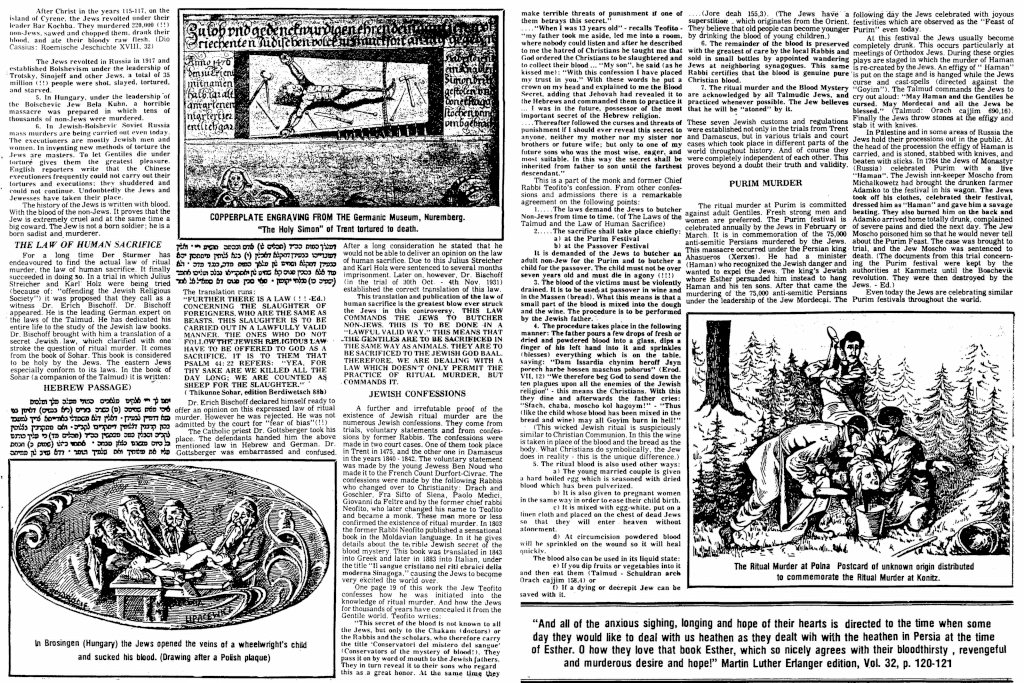

Another very informative book is "Passovers of Blood" by Jewish historian Ariel Toaff. The book caused a major backlash, and MKs demanded that the state examine ways in which it could prosecute Professor Ariel Toaff. JR Books Online has done a tremendous job with their "Banned Book Series" which contains a lot of books about this topic.
Jewish Ritual Murder of 5 Chicago Children
The Jewish community in Chicago, one of the wealthiest in the world, has always exercised an extremely powerful degree of behind the scenes influence in the Windy City, an influence just as pervasive and powerful (if not more so) as that of the Italian organized crime syndicates, all the more sinister for being far less visible. Between October of 1955 and December of 1956, a total of five White children, 3 young boys (two brothers and a friend) and 2 teenage sisters were abducted and murdered in a manner which was suggestive of Jewish ritual sacrifice, the liturgical object of which is to obtain Gentile blood to mix with the matzoh used in several esoteric Jewish religious ceremonies such as Purim, Passover, and Kol Nidre at Yom Kippur.
The murder victims were John and Anton Schuessler, Jr., Robert Peterson, and Barbara and Patricia Grimes. Both cases remain officially unsolved despite hundreds of man-hours of investigation by the Chicago police. The cases shared certain characteristics in common. The boys, aged 14, 13, and 11 respectively, and the girls aged twelve and fifteen were found nude, and yet none had been sexually assaulted. According to the pathologists’ reports, they had been kept alive for some time after they were reported missing, although the unusually cold weather in which the girls’ bodies were exposed impeded fixing an exact time of death. The corpses showed ligature marks on the wrists and ankles, indicating that they had been tied or restrained.
All the victims had been tortured with mostly small, shallow cuts and puncture wounds, none sufficient to cause death of itself. The official cause of death was listed as blood loss and shock due to blood loss and exposure. Although 14 year-old Bobby Peterson appears to have resisted his attackers and was beaten on the head with a blunt instrument and strangled into unconsciousness by strong hands with “fingernails like claws” which left marks on his throat. Further peculiarities were observed in the PATTERN of the torture. The two female victims had been tormented by repeated puncture wounds on the upper torso, thighs, and buttocks, suggesting a sadistic sexual element in the killer’s motivations, but the two youngest male victims, the Schuesslers, had been transfixed through the hands, wrists and feet by larger weapons similar to nails or a carpenter’s awl, inflicting wounds very similar to those of Christ.
John Schuessler was missing a fragment of skin on one of his thighs, which had been removed deliberately, trying to hide marks printed on his skin. There were eleven jagged, irregular wounds on Bobby’s scalp. The eyes and mouths of the boys had also been mutilated in a manner never publicly released. Another interesting forensic aspect of the case was that the boy’s wounds contained traces of an unspecified GRAIN, of all things, a form of matzoh. Floor mat patterns embedded in the flesh of one victim indicated that his body had been transported in a Packard automobile, a luxury car popular among the wealthiest people of the time which was no longer made, and which indicated someone with money enough to buy and maintain such an upmarket vehicle.
Edict of Expulsion, 1290
The Edict of Expulsion was a royal decree issued by King Edward I of England on 18 July 1290 expelling all Jews from the Kingdom of England. Edward advised the sheriffs of all counties he wanted all Jews expelled by no later than All Saints' Day (1 November) that year. The expulsion edict remained in force for the rest of the Middle Ages. The edict was overturned during the Protectorate more than 350 years later, when Oliver Cromwell permitted Jews to return to England in 1657.
The first Jewish communities of significant size came to England with William the Conqueror in 1066. After the conquest of England, William instituted a feudal system in the country, whereby all estates formally belonged to the Crown; the king then appointed lords over these vast estates, but they were subject to duties and obligations (financial and military) to the king. Under the lords were other subjects such as serfs, who were bound and obliged to their lords, and to their lords' obligations.
Merchants had a special status in the system, as did Jews. Jews were declared to be direct subjects of the king, unlike the rest of the Gentile population, who became interned into Serfdom. This was an ambivalent legal position for the Jewish population, in that they were not tied to any particular lord but were subject to the whims of the king. Every successive king formally reviewed a royal charter, granting Jews the right to remain in England. The reputation of Jews as extortionate moneylenders arose, which made them extremely unpopular with both the Church and the general public.
“The simplest way to describe a usury-based central banking system is this: The bankers demand the property of the Nation as collateral for their loans. At interest, more money is owed them that they created with the loans. So, eventually, the bankers foreclose on the Nation.”
An image of the Jew as a diabolical figure who hated Christ started to become widespread, and accounts such as the tale of the Wandering Jew and allegations of ritual murders originated and spread throughout England as well as in Scotland and Wales. In frequent cases of blood libel, Jews were said to hunt for children to murder before Passover so that they could use their blood to make the unleavened matzah. The situation only got worse for Jews as the 13th century progressed. In 1218, Henry III of England proclaimed the Edict of the Badge, requiring Jews to wear a marking badge [sound familiar?]. Henry III imposed greater segregation and reinforced the wearing of badges in the 1253 Statute of Jewry.
To counter spiralling debt, Henry III's court and major Barons bought Jewish debts with the intention of securing lands of lesser nobles through defaults. he Second Barons' War in the 1260s brought a series of pogroms aimed at destroying the evidence of these debts and Jewish communities in major towns, including London, Worcester, Canterbury, and many other towns. The Statute of the Jewry outlawed all lending at interest and gave Jews fifteen years to readjust. In the duchy of Gascony in 1287, King Edward ordered the local Jews expelled. All their property was seized by the crown, and all outstanding debts payable to Jews were transferred to the King's name.
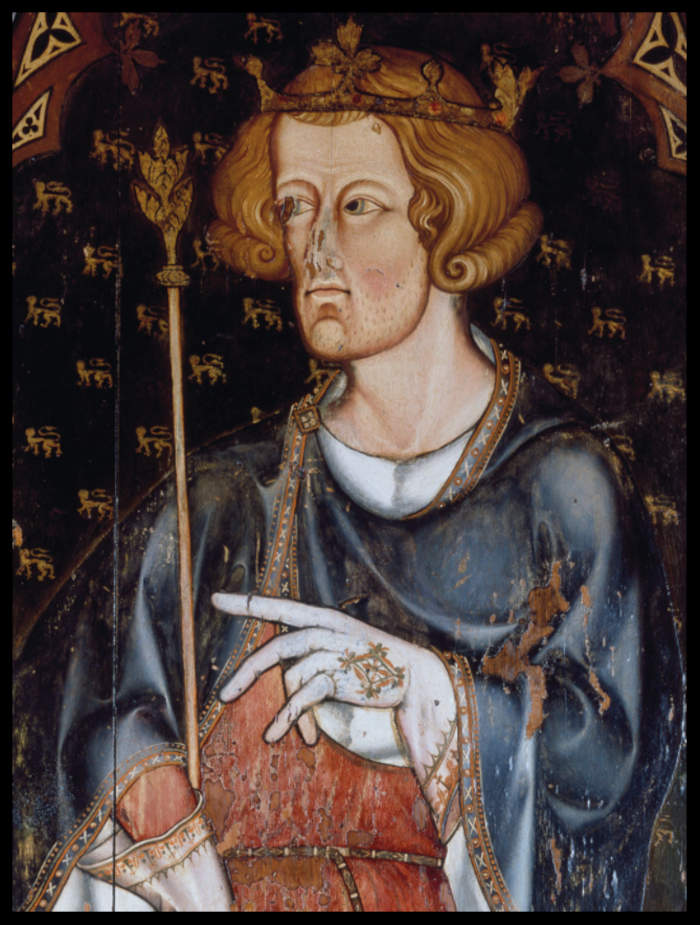
By the time he returned to England in 1289, King Edward was deeply in debt, Jews had become a significant threat to the Gentile Kingdom. The next summer, he summoned his knights to impose a steep tax. To make the tax more palatable, Edward, in exchange, essentially offered to expel all Jews. The heavy tax was passed, and three days later, on 18 July, the Edict of Expulsion was issued. The official reason for the expulsion was that Jews had declined to follow the Statute of Jewry and continued to practice usury. The edict of expulsion was widely popular and met with little resistance, and the expulsion was quickly carried out.
“There are two ways to conquer and enslave a nation. One is by the sword. The other is by debt”.
Many Jews emigrated, to Scotland, France, and the Netherlands, and as far as Poland. Occasionally permits were given to individuals to visit England, as in the case of Dr Elias Sabot (an eminent physician from Bologna summoned to attend Henry IV) in 1410, but it was not until the expulsion of the Jews from Spain in 1492 and Portugal in 1497 that any considerable number of Sephardic Jews found refuge in England. In 1542, many were arrested on the suspicion of being Jews, and throughout the sixteenth century a number of persons named Aaron López of Newport (infamous Jewish Slave Trading Family), took refuge in England, one of them known to Queen Elizabeth I, as a physician named Rodrigo López.
Well Poisoning
In late medieval Europe, suspicions arose that Jews wished to destroy the Christian majority by poisoning water sources. These suspicions were held by rulers, nobles and officials in various parts of the European continent during the fourteenth and fifteenth centuries.
The most infamous well poisonings happened in the German Empire between 1348 and 1350. At this time, the Black Death (bubonic plague) devastated the continent, and Jews were accused of intentionally spreading the disease by poisoning wells.
In 1321, lepers in south-western France were accused of attempting to spread their particular illness by poisoning water sources. These accusations evolved to include the idea that the plot was initiated by Muslim rulers and aided by the Jews of France. As a consequence, both Jews and lepers were expelled and or isolated, diease speading cases happened until the fifteenth century.
Alhambra Decree 1492
By the end of the 8th century, Muslim forces had conquered and settled most of the Iberian Peninsula. Under Islamic law, the Jews, who had lived in the region since at least Roman times, were considered “People of the Book,” which was a protected status. The tolerance of the Muslim Moorish rulers of al-Andalus allowed Jewish communities to advance. Jewish merchants were able to trade freely across the Islamic world and thus made Jewish enclaves in Muslim Iberian cities great centres of learning and commerce. Jewish culture spread significantly, Jewish scholars were able to gain favour in Muslim courts as skilled physicians, diplomats, translators, and poets. In Granada, Jewish men were appointed to very high offices, including Grand Vizier.
The Reconquista, or the gradual reconquest of Muslim Iberia by the Christian kingdoms in the North, was driven by a powerful religious motivation: to reclaim Iberia for Christendom following the Umayyad conquest of Hispania centuries before. By the 14th century, most of the Iberian Peninsula (present-day Spain and Portugal) had been reconquered by the Christian kingdoms of Castile, Aragon, León, Galicia, Navarre, and Portugal. During the Christian re-conquest, the Muslim kingdoms in Spain became less welcoming to the dhimmi (a term for non-Muslims living in an Islamic state with legal protection. The word literally means “protected person”).
In the late twelfth century, the Muslims in al-Andalus invited the fanatical Almohad dynasty from North Africa to push the Christians back to the North. After they gained control of the Iberian Peninsula, the Almohads offered the Sephardim a choice between expulsion, conversion, and death. Many Jews fled to other parts of the Muslim world, and also to the Christian kingdoms, which initially welcomed them. In Christian Spain, Jews functioned as courtiers, government officials, merchants, and moneylenders. The Jewish community was both useful to the ruling classes and to an extent protected by them.
Hostility towards the Jews in Spain was brought to a climax during the reign of the “Catholic Monarchs,” Ferdinand and Isabella. Their marriage in 1469, which formed a personal union of the crowns of Aragon and Castile, with coordinated policies between their distinct kingdoms, eventually led to the final unification of Spain. Although their initial policies towards the Jews were protective, Ferdinand and Isabella were disturbed by reports claiming that most Jewish converts to Christianity were insincere in their conversion; Conversos continued to practice Judaism in secret (see Crypto-Judaism) drawing conversos back into the Jewish fold.
The independent Islamic Emirate of Granada had been a tributary state to Castile since 1238. Jews and conversos played an important role during this campaign because they had the ability to raise money and acquire weapons through their extensive trade networks. This perceived increase in Jewish influence further infuriated the Old Christians and the hostile elements of the clergy. By 1492, Ferdinand and Isabella had won the Battle of Granada and completed the Catholic Reconquista of the Iberian Peninsula from Islamic forces. However, the Jewish population emerged from the campaign more hated by the populace and less useful to the monarchs.
The king and queen issued the Alhambra Decree less than three months after the surrender of Granada. The text of the decree accused the Jews of trying “to subvert the holy Catholic faith” by attempting to “draw faithful Christians away from their beliefs.” After the decree was passed, Spain's entire Jewish population was given only four months to either convert to Christianity or leave the country. The edict promised the Jews royal protection and security for the effective three-month window before the deadline. They were permitted to take their belongings with them, excluding “gold or silver or minted money or other things prohibited by the laws of our kingdoms”. The punishment for any Jew who did not convert or leave by the deadline was summary execution.
The Sephardic Jews migrated to four major areas: North Africa, the Ottoman Empire, Portugal, and Italy. Some Spanish Jews who emigrated to avoid conversion dispersed throughout the region of North Africa known as the Maghreb. The Jewish scholars and physicians among previous Sephardic immigrants to this area had reinvigorated the Jewish communities in North Africa. Jews in North Africa often intermingled with the already existing Mizrahi Arabic or Berber-speaking communities, becoming the ancestors of the Moroccan, Algerian, Tunisian, and Libyan Jewish communities. Related: Barbary Coast Slave Trade.
Many Spanish Jews also fled to the Ottoman Empire, where they were given refuge. Sultan Bayezid II of the Ottoman Empire, learning about the expulsion of Jews from Spain, dispatched the Ottoman Navy to bring the Jews safely to Ottoman lands, mainly to the cities of Thessaloniki (currently in Greece) and İzmir (currently in Turkey); these Jews became known as the Donmeh. Many of these Jews also settled in other parts of the Balkans ruled by the Ottomans, such as the areas that are now Bulgaria, Serbia, and Bosnia.
A majority of Sephardim migrated to Portugal, where they gained only a few years of respite from persecution. About 600 Jewish families were allowed to stay in Portugal following an exorbitant bribe until the Portuguese king entered negotiations to marry the daughter of Ferdinand and Isabella. Caught between his desire for an alliance with Spain and his economic reliance on the Jews, Manuel I declared the Jewish community in Portugal (perhaps then some 10% of that country's population) Christians by royal decree unless they left the country. In return, he promised the Inquisition would not come to Portugal for 40 years.
The Alhambra decree lasted a staggering 476 years and was not officially revoked until 1968, after the Second Vatican Council rejected the charge of deicide traditionally attributed to the Jews. From November 2012 Sephardi Jews have had the right to automatic Spanish nationality without the requirement of residence in Spain. Before November 2012, Sephardi Jews already had the right to obtain Spanish citizenship after a reduced residency period of two years. While their citizenship is being processed, Sephardi Jews are entitled to the consular protection of the Kingdom of Spain. As of November 2015, 4300 Sephardi Jews have benefited from this law and acquired Spanish citizenship.
Sabbateanism
Shabbetai Zevi crowned as the Messiah in 1666 then shocked the Jewish world by converting to Islam. The Donmeh (followers of Zevi named Sabbetaens) destroyed the Ottoman Empire from within, created Wahabbism founded Saudia Arabia to secure a Jewish state of Israel.
Messiahs of Death
There were numerous Jewish secret societies of Sabbateans (followers of Sabbatai Zevi), known as Donmeh, in Eastern Poland (now Ukraine), particularly in Podolia and Galicia, at the end of the seventeenth century. In expectation of the great Messianic revolution, the members of these societies violated Jewish laws and customs. The cult of the Sabbateans is believed to have included both asceticism and sensuality: some did penance for their sins, subjected themselves to self-inflicted pain, and “mourned for Zion”; others disregarded the strict rules of modesty required by Judaism, and at times were accused of being licentious.
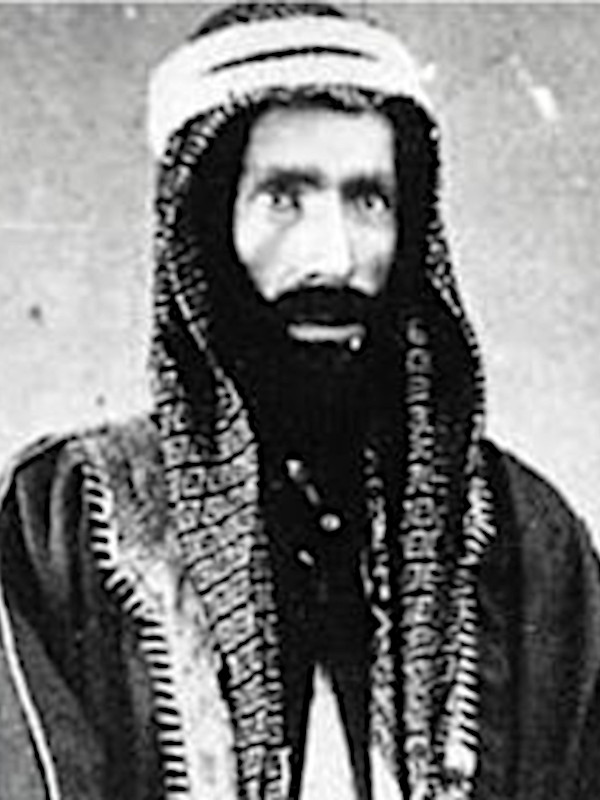
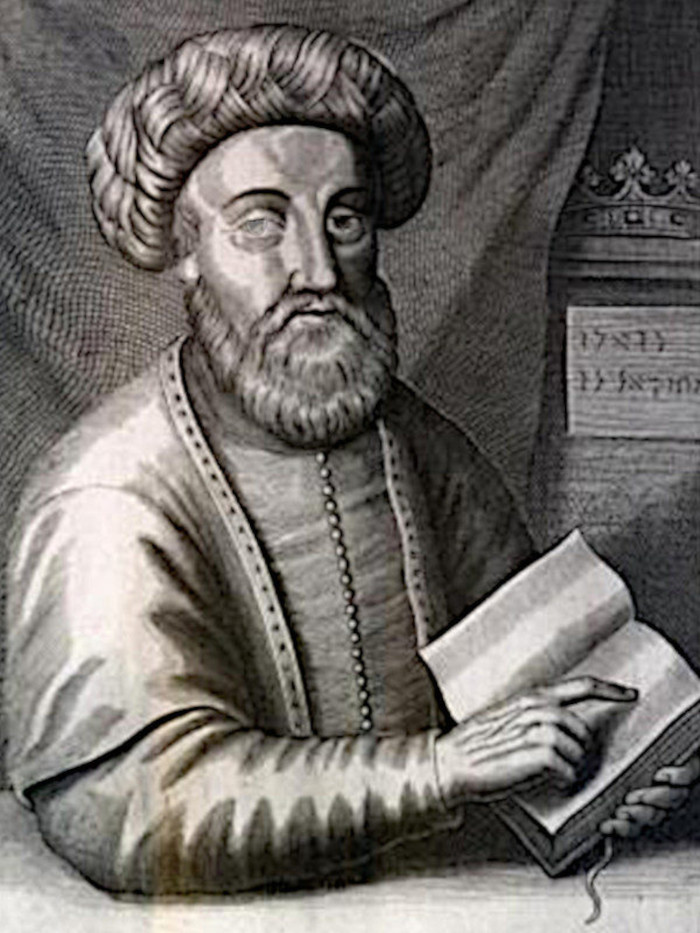
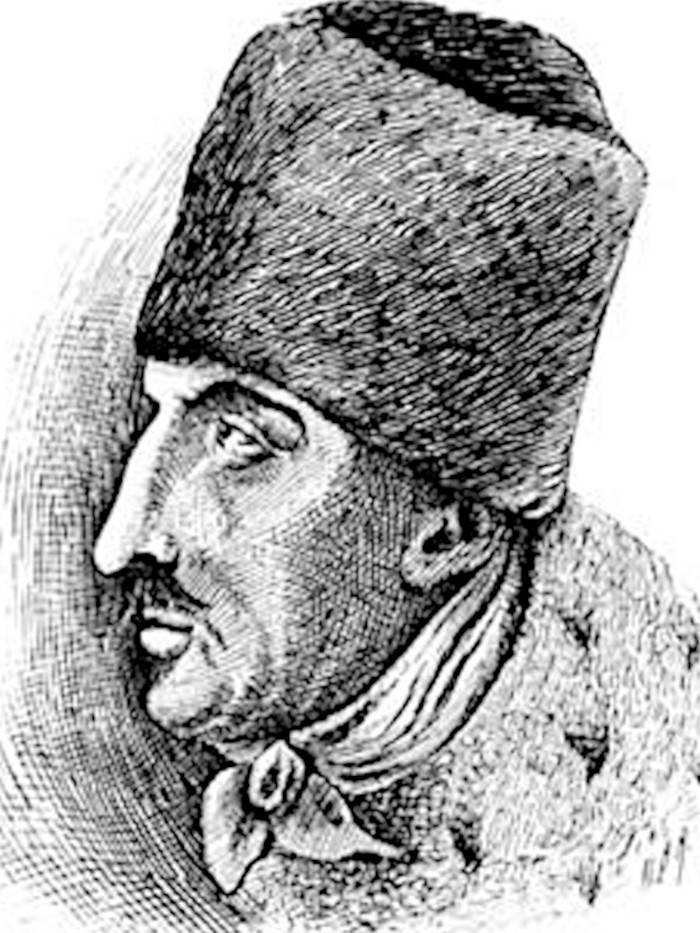
Shabbetai Zevi
The name Shabbetai literally means the planet Saturn, and in Jewish tradition “The reign of Sabbatai”, the highest planet, was often linked to the advent of the Messiah. Zevi's family were Romaniote Jews from Patras; his father, Mordecai, was a poultry dealer in the Morea. During the war between Turkey and Venice, Smyrna became the center of Levantine trade. Mordecai became the Smyrna agent of an English trading house; Sabbatai hance learned about Western millenarian expectations at his father's house. This was said to combine influence of English/Dutch Calvinist millenarianism within the messianic movement that later developed around Zevi's activities. Influenced by Isaac Luria, Zevi Sabbatai studied mysticism and the kabbalah.
During the first half of the 17th century, millenarian ideas of the approach of the Messianic time were popular. They included ideas of the redemption of the Jews and their return to the land of Israel, with independent sovereignty. The apocalyptic year was identified by Christian authors as 1666 and millenarianism was widespread in England. This belief was so prevalent that Manasseh ben Israel, in his letter to Oliver Cromwell and the Rump Parliament, appealed to it as a reason to re-admit Jews into England, saying, “[T]he opinions of many Christians and mine do concur herein, that we both believe that the restoring time of our Nation into their native country is very near at hand.”.
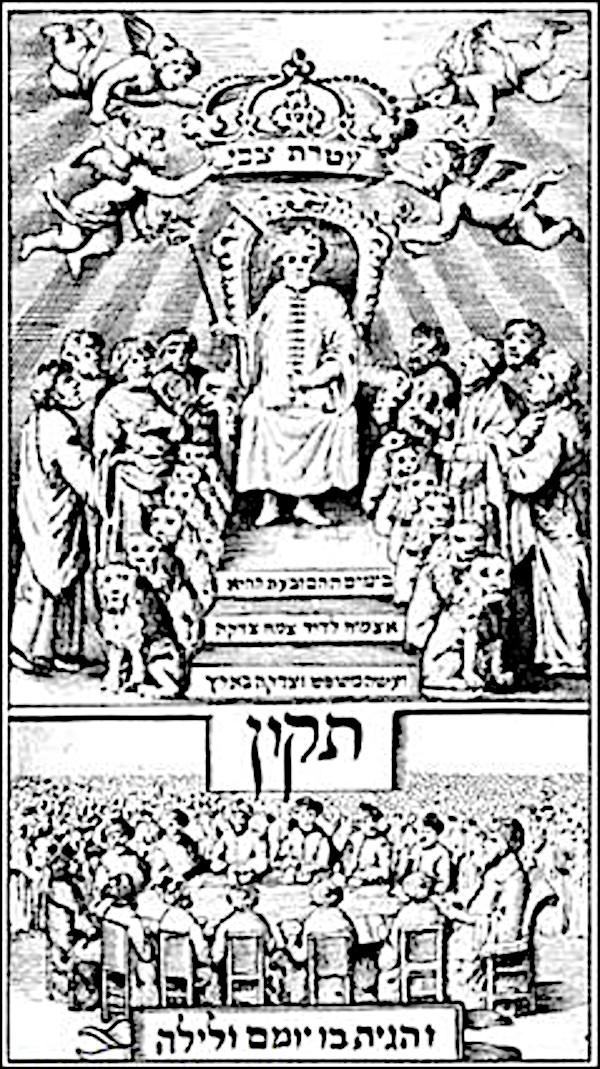
At age 22 in 1648, Sabbatai started declaring to his followers in Smyrna that he was the true Messianic redeemer. To prove this claim, he started to pronounce the Tetragrammaton, an act which Judaism emphatically prohibited to all but the Jewish high priest in the Temple in Jerusalem on the Day of Atonement. By 1658, he was in Constantinople, where he met a preacher, Abraham Yachini (a disciple of Joseph di Trani), who confirmed Sabbatai's messianic mission. Yachini is said to have forged a manuscript in archaic characters which, he alleged, bore testimony to Sabbatai's Messiahship. It was entitled “The Great Wisdom of Solomon”, and began:
“I, Abraham, was confined in a cave for forty years, and I wondered greatly that the time of miracles did not arrive. Then was heard a voice proclaiming, 'A son will be born in the Hebrew year 5386 [the year 1626 CE] to Mordecai Zevi; and he will be called Shabbethai. He will humble the great dragon; … he, the true Messiah, will sit upon My throne.”.
Vast numbers of Jews in the Jewish diaspora accepted his claims, even after he outwardly became an apostate due to his conversion to Islam in the same year. Sabbatai Zevi's followers, both during his “Messiahship” and after his conversion to Islam, are known as Sabbateans, many live in Turkey as the Donmeh. Much to the shock and chagrin of the Jewish world, Sabbatai appeases the Sultan. He then begins to lay the groundwork restructuring of the world based on universalism and world brotherhood, ruled by an elite of his devoted followers.
Sabbatai was taken from Abydos to Adrianople, where the sultan's vizier gave him three choices; subject himself to a trial of his divinity in the form of a volley of arrows (in which should the archers miss, his divinity would be proven); be impaled; or convert to Islam… On September 16, 1666 (Zevi cast off his Jewish garb, put a Turkish turban on his head and officially abandoned his faith for Islam. Some days after his conversion he wrote to Smyrna: “God has made me an Ishmaelite; He commanded, and it was done. The ninth day of my regeneration”.
Many within Zevi's inner circle followed him into Islam, including his whore wife Sarah and most of his closest relatives and friends. Meanwhile, inside the Ottoman Empire, those followers of Zevi who had converted to Islam but who secretly continued Jewish observances and Brit Mila became known as the Dönme (Turkish: dönme “convert”). There were some internal subdivisions within the sect, according to the geographical locations of the group, and according to whom the leaders of these groups were after the death of Shabbatai Zevi.
The Dönmeh, along with traditional Jews, became powerful political and business leaders in Salonica. It was this core group of Dönmeh, which organised the secret Young Turks, also known as the Committee of Union and Progress, the secularists who deposed Ottoman Sultan Abdulhamid II in the 1908 revolution, proclaimed the post-Ottoman Republic of Turkey after World War I, and who instituted a campaign that stripped Turkey of much of its Islamic identity after the fall of the Ottomans.
Abdulhamid II was vilified by the Young Turks as a tyrant, but his only real crime appears to have been to refuse to meet Zionist leader Theodore Herzl during a visit to Constantinople in 1901 and reject Zionist and Dönmeh offers of money in return for the Zionists to be granted control of Jerusalem. Sultan Adulhamid II appears to have sealed his fate with the Dönmeh with this statement to his Ottoman court:
“Advise Dr. Herzl not to take any further steps in his project. I cannot give away even a handful of the soil of this land, for it is not my own, it belongs to the entire Islamic nation. The Islamic nation fought jihad for the sake of this land and had watered it with their blood. The Jews may keep their money and millions. If the Islamic Caliphate state is one day destroyed, then they will be able to take Palestine without a price! But while I am alive, I would rather push a sword into my body than see the land of Palestine cut and given away from the Islamic state.”.
After his ouster by Ataturk’s Young Turk Dönmeh in 1908, Abdulhamid II was jailed in the Donmeh citadel of Salonica. He died in Constantinople in 1918, three years after Ibn Saud agreed to a Jewish homeland in Palestine and one year after Lord Balfour deeded Palestine away to the Zionists in his letter to Baron Rothschild. Some texts suggest that the Dönmeh numbered no more than 150,000 and were mainly found in the army, government, and business. However, other experts suggest that the Dönmeh may have represented 1.5 million Turks and were even more powerful than believed by many and extended to every facet of Turkish life.
Ataturk, who was reportedly himself a Dönmeh, ordered that Turks abandon their own Muslim-Arabic names. The name of the first Christian emperor of Rome, Constantine, was erased from the largest Turkish city, Constantinople. The city became Istanbul, after the Ataturk government in 1923 objected to the traditional name. There have been many questions about Ataturk’s own name, since “Mustapha Kemal Ataturk” was a pseudonym. Some historians have suggested that Ataturk adopted his name because he was a descendant of none other than Rabbi Zevi, the self-proclaimed Messiah of the Dönmeh! Ataturk also abolished Turkey’s use of the Arabic script and forced the country to adopt the western alphabet.
In The Forward of January 28, 1994 and in The New York Sun, Hillel Halkin wrote that Ataturk recited the Jewish Shema Yisrael (“Hear O Israel”), saying that it was “my prayer too.”” Halkin wrote in The New York Sun article about an email he received from a Turkish colleague: “I now know — and I haven’t a shred of doubt — that Ataturk’s father’s family was indeed of Jewish stock.” An article in The Forward of May 8, 2007, revealed that Dönmeh dominated Turkish leadership “from the president down, as well as key diplomats… and a great part of Turkey’s military, cultural, academic, economic, and professional elites” kept Turkey out of a World War II alliance with Germany, and deprived Hitler of a Turkish route to the Baku oilfields”.
In his book, The Donme: Jewish Converts, Muslim Revolutionaries and Secular Turks, Professor Marc David Baer wrote that many advanced to exalted positions in the Sufi religious orders. Israel has always been reluctant to describe the Turkish massacre of the Armenians by the Turks in 1915 as “genocide”. It has always been believed that the reason for Israel’s reticence was not to upset Israel’s close military and diplomatic ties with Turkey. However, more evidence is being uncovered that the Armenian Genocide was largely the work of the Dönmeh leadership of the Young Turks. Historians like Ahmed Refik, who served as an intelligence officer in the Ottoman army, averred that it was the aim of the Young Turks to destroy the Armenians, who were mostly Christian.
Jacob Frank
Jacob Joseph Frank (born Jakub Lejbowicz; 1726 – December 10, 1791) was an 18th-century Polish-Jewish religious leader who claimed to be the reincarnation of the self-proclaimed messiah Sabbatai Zevi (1626–1676) and also of the biblical patriarch Jacob. The Jewish authorities in Poland excommunicated Frank and his followers due to his heretical doctrines that included deification of himself as a part of a trinity and other controversial concepts such as neo-Carpocratian “purification through transgression”.
The Sabbateans informed Mikołaj Dembowski, the Catholic Bishop of Kamieniec Podolski, Poland, that they not only rejected but inverted the Talmud and recognised only the sacred book of Kabbalah, the Zohar, which did not contradict the Christian doctrine of the Trinity. They stated that they regarded the Messiah-Deliverer as one of the embodiments of the three divinities. took Frank and his followers (the “Anti-Talmudists”, or "Zoharistic Jews”) under his protection and in 1757 arranged a religious disputation between them and the rabbis of the traditionalist community.
“And if they are truly Christians, they will observe their faith with truth, and not allowwithin their boundary this new unfit Messiah Shabbetai Zevi who came to destroy the Earth.”.
The Anti-Talmudists presented their theses, which began the intense dispute. Dembowski sided in favour of the Frankists and also ordered the burning of all copies of the Talmud in Poland. 10,000 volumes were destroyed. Sabbatean Revelations called for the conversion of Frank and his followers to the Christian religion, which was to be a visible transition stage to the future "das” or religion to be revealed by Frank. In 1759 negotiations looking toward the conversion of the Frankists to Roman Catholicism were being actively carried on with the higher representatives of the Polish Church; at the same time, the Frankists tried to secure another discussion with the rabbis. But a year later, Frank was eventually accused of heresy and was thrown into the Citadel of Czenstokova. Frank lived comfortably at the monastery for 13 years.
Additionally, because many were now “officially” Catholic, they were able to join or form Masonic lodges where they liked to plot and conspire. In particular, the elite Frankist inbred families operated out of the Mason Order of Asiatic Brethren in Vienna. More lodges were opened in Hamburg and Berlin. Even gentile Masonic lodges were very amenable to Jewish converts to Christianity, especially among men of means (crypto-Jew Frankists) who could grease palms and provide sexual favors. This led to a path of infiltration and, of course, compromising control.
“Better to reign in Hell, than serve in Heaven”.
The Sabbatean-Frankists inverted traditional Jewish-Christian values, including the 10 Commandments, restrictions on debauched sexuality, man’s dominion over the environment, etc. Further, given Sabbatean-Frankism’s apocalyptic nature, the modernLeft is riven with irrational destructive impulses. From that debauchery was born the theology of Redemption Through Sin, a complete inversion of the Christian theology of promoting love as the expression to aim for redemption. Inversion is the method of Kabbalah, it is the sophistry they espouse that entraps and thus condemns a weak soul to slavery.
Following the death of Jakob Frank in 1791, his movement fell apart. About a century later, “Neo-Frankism” and related Jewish mysticism became common among Jewish intelligentsia. The following listed infuential intellectuals are all linked to Sabbatean-Frankism:
- Communism (Karl Marx)
- Sexual depravity (Sigmund Freud)
- Corporate Leftism (Edward Bernays)
- Multiculturalism (Horace Kallen)
- Deconstructivism/Critical Theory (Walter Benjamin)
- Frankfurt School (Theodore Adorno)
- Radical jurisprudence (Brandeis, Frankfurter, and Cardozo)
- Large-scale, non-selective immigration (Israel Zangwill, Emma Lazarus)
Frankism is a distinct system from Sabbateanism (it has less mysticism and more radicalism and is more primed as a political movement). Frank is notable for innovating ideas such as contemporary feminism and Labour Zionism. Notoriously, Frankists engaged in orgies, paedophilia, adultery, wife-swapping, murder, and all manner of sin, ritualistically. Gramsci’s Long March allowed nearly all institutions of the West (religious, political, and corporate) to be taken over by neo-Frankism. The “Frankist Paradigm” is the set of neo-Frankist beliefs that have now metastasised across Western culture. These ideas find resonance in a multicultural society, where animosities brew under the surface and politics becomes a proxy for ethnic warfare.
- Without traditionalism, society becomes insipid and narcissistic, finding itself attracted to radical politics as a catharsis and a sadistic release.
- Without unity, society divides into warring factions. The Frankist Paradigm weaponises these conflicts, producing a society of malcontents more interested in destruction and animosity than collective progress.
Sabbatean-Frankists were deeply cynical and relish deception. Frankists were commanded: “a believer must not appear as he really is”. So, instead of saying that they were influenced by Frank, they make up risible hagiography-worthy stories of their profound altruism and humanity (Marx claiming that he was inspired to Communism by seeing unneeded scrap wood not being shared to help keep the German locals warm). The three most significant immigration activists of the Victorian Era: Israel Zangwill, Emma Lazarus, and Horace Kellen, are similarly all linked to Sabbatean-Frankism. They even had a secretive Sabbatean-style Zionist organisation where Horace Kallen, Stephen Wise, and Brandeis operated.
Sabbatean-Frankists often held psychotic narcissistic fantasies of the West’s destruction at their hands: Marx’s “Revolution” and Satanic poetry of destruction or Freud fancying himself as Hannibal, conqueror of the West. This obsession with destruction, as an end in itself, stands in contrast to traditional “gentile” Leftism. Unitarian soppose traditional Christian values, yet they do not seem obsessed with destroying all sane, rational order. Sabbatean-Frankists cynically feigned “secular humanism”, but they represent a distinctideology from, say, Robespierre, who sought a form of rational order. Even Marquis deSade is viewed as a satirist by Camille Paglia. But, there is nothing satirical about Freud or Marx.
Sabbatean-Frankists were nearly always Germanic Jews. Germanic Jews comprise atiny portion of global Jewry (even before the Holocaust). As mentioned earlier, modernneo-Frankists often had origins in specific areas historically known for Sabbatean-Frankist activity: Posen, Warsaw, Prague, Vienna, Frankfurt. This regionality strengthens the argument that this is a distinct intellectual movement. Jews were uniquely prone to Frankism. Wealthy, narcissistic, and brilliant, the German elite was embarrassed by their Jewish roots and traditions. Felix Mendhellson was so ashamed of his Jewish background that he played under a Christian name. They sought to forge a new identity for Judaism and to establish dominion over Israel through their Zionist project.
When the Frankists established themselves in 1786 in Offenbach, they were patronised by “unidentified philanthropists” of the Frankfurt community. But during the Frankfurt Masonic Lodge’s formative years, the three most active members of the Frankfurt Judenloge were Frankist-influenced: Sigmund Geisenheimer, Michael Hess (1782-1860) and Justus Hiller. They were also leaders in the liberal Jewish Reformist movement. Michael Hess was hired by Mayer Amschel Rothschild (1744-1812) as a tutor for his children. Geisenheimer was Mayer Rothschild’s head clerk. Thus, the spirit and mentality of Frankism received a large boost from the richest family in Europe. Incidentally, 29 out of 58 of Mayer Amschel Rothschild’s grandchildren married first or second cousins.
The union between the secret societies of Illuminism and Freemasonry was sealed in 1782 at the Congress of Wilhelmbad. The other movement that was brought forth at the Congress was pro-Semitism, or the emancipation of the Jews. This, of course, included opening up the Masonic Lodges to them. The Illuminism headquarters was relocated to Rothschild centre of Frankfurt at the same time. Curiously, this new movement corresponded with the rise of the Sabbattean-Frankist influenced House of Rothschild, as well as the Jewish families Oppenheimer, Wertheimer, Schuster, Spreyer and Stern in Frankfurt.
Muhammad ibn Abdul Wahhab
Upon his expulsion from 'Uyayna, Ibn ʿAbd al-Wahhab was invited to settle in neighboring Diriyah by its ruler Muhammad bin Saud. After some time in Diriyah, Muhammad ibn ʿAbd al-Wahhab concluded his second and more successful agreement with a ruler. Ibn ʿAbd al-Wahhab and Muhammad bin Saud agreed that, together, they would bring the Arabs of the peninsula back to the “true” principles of Islam as they saw it. According to one source, when they first met, bin Saud declared:
“This oasis is yours, do not fear your enemies. By the name of God, if all Nejd was summoned to throw you out, we will never agree to expel you”.
Muhammad ibn ʿAbd al-Wahhab replied:
“You is the settlement's chief and wise man. I want you to grant me an oath that you will perform jihad against the unbelievers. In return, you will be imam, leader of the Muslim community and I will be leader in religious matters.”.
The agreement was confirmed with a mutual oath of loyalty (bay'ah) in 1744. Ibn Abd al-Wahhab would be responsible for religious matters and Ibn Saud in charge of political and military issues. This agreement became a “mutual support pact” and power-sharing arrangement between the Al Saud family, and the Al ash-Sheikh and followers of Ibn ʿAbd al-Wahhab, which has remained in place for nearly 300 years. The pact marked the emergence of the first Saudi state, the Emirate of Diriyah. By offering the Al Saud a clearly defined religious mission, the alliance provided the ideological impetus to Saudi expansion. Saud's forces then expanded the Salafi influence to most of the present-day territory of Saudi Arabia, eradicating various popular practices they viewed as akin to polytheism and propagating the doctrines of ʿAbd al-Wahhab.
Historical accounts of Wahhab also state that “Muhammad ibn ʿAbd al-Wahhab saw it as his mission to restore a purer and original form of the faith of Islam. […] Anyone who didn't adhere to this interpretation were considered polytheists worthy of death, including fellow Muslims (especially Shi'ite who venerate the family of Muhammad), Christians and others. In 2010, Prince Salman bin Abdul-Aziz at the time-serving as the governor of Riyadh said that the teaching of Muhammad Ibn Abdul-Wahab was pure Islam, and said regarding his works, “I dare anyone to bring a single alphabetical letter from the Sheikh's books that goes against the book of Allah … and the teachings of his prophet, Mohammed.”.
House of Saud
An Iraqi intellegence report documented that both Abdul Wahhab, and his sponsor, ibn Saud, who founded the Saudi dynasty, were of Jewish origin (from Donmeh Jews from Turkey). The House of Saud linked with Wahhabism through marriage of Bin Saud’s son, Abdul Aziz, with al-Wahhab’s daughter in 1744 with goal to unify the Arabian Peninsula and to spread a more surface view of Islam embodied by Wahhabism.
“We, The Saudi Family, are cousins of the Jews: we entirely disagree with any Arab or Muslim Authority which shows any antagonism to the Jews; but we must live together with them in peace. Our country (ARABIA) is the Fountain head from where the first Jew sprang, and his descendants spread out all over the world”.
Hafez Wahbi, The Saudi Legal Adviser, in his book entitled: “The peninsula of Arabia” said King Abdul Aziz Al-Saud, who died in 1953, had said:
“Our Message (SAUDI MESSAGE) encountered the opposition of all Arab Tribes; my grandfather, SAUD AWAL, once imprisoned a number of the Sheikhs of MATHEER Tribe and when another group of the same tribe came to intercede for the release of the prisoners, SAUD AWAL gave orders to his men to cut off the heads of all the prisoners, then, he wanted to humiliate and derogate the interceders by inviting them to eat from a banquet he prepared from the cooked flesh of his victims whose cut off heads he placed on the top of the food platters!! (But they) became so alarmed and declined to eat the flesh of their relatives; and, because of their refusal to eat, he ordered his men to cut off their heads too”.
Transatlantic Slave Trade
The Transatlantic slave trade involved the transportation by slave traders of enslaved African people, mainly to the Americas. The slave trade regularly used the triangular trade route and its Middle Passage, and existed from the 16th to the 19th centuries.
“They came with ships carrying African blacks to be sold as slaves. The traffic in slaves was a royal monopoly and the Jews were often appointed as agents for the Crown in their sale. They were the largest ship chandlers in the entire Caribbean region, where the shipping business was mainly a Jewish enterprise. The ships were not only owned by Jews but were manned by Jewish crews and sailed under the command of Jewish Captains”.
Newport on Rhode Island was the centre of the American slave trade and also had America's oldest Synagogue…
“Jewish merchants played a major role in the slave trade. In fact, in all the American colonies, whether French (Martinique), British or Dutch, Jewish merchants frequently dominated. This was no less true on the North American mainland, where during the eighteenth century Jews participated in the ‘triangular trade’ that bought slaves from Africa to the West Indies and there exchanged them for molasses, which in turn was taken to New England and converted into rum for sale in Africa”.
Some of the most prolific Jewish importers of slaves were Isaac Da Costa of Charleston in the 1750s, David Franks of Philadelphia in the 1760s and Aaron Lopez of Newport in the late 1760s and early 1770s dominated Jewish slave trading on the American continent.
“The Jews in this particular sphere of activity far outnumbered all the other 'dealers'… The Jewish trafficker in women is the most terrible of all profiteers of human vice; if the Jew could only be eliminated, the traffic in women would shrink and would become comparatively insignificant”.
Here is an incomplete list of Slave Ships and their Jewish Owners…
- Ship: Abigail / Owner: Aaron Lopez, Moses Levy, Jacob Franks
- Ship: Crown / Owner: Issac Levy and Nathan Simpson
- Ship: Nassau / Owner: Moses Levy
- Ship: Four Sisters / Owner: Moses Levy
- Ship: Anne & Eliza / Owner: Justus Bosch and John Abrams
- Ship: Prudent Betty / Owner: Henry Cruger and Jacob Phoenix
- Ship: Hester / Owner: Mordecai and David Gomez
- Ship: Elizabeth / Owner: Mordecai and David Gomez
- Ship: Antigua / Owner: Nathan Marston and Abram Lyell
- Ship: Betsy / Owner: Wm. De Woolf
- Ship: Polly / Owner: James De Woolf
- Ship: White Horse / Owner: Jan de Sweevts
- Ship: Expedition / Owner: John and Jacob Rooseveltv
- Ship: Charlotte / Owner: Moses and Sam Levy and Jacob Franks
- Ship: Caracoa / Owner: Moses and Sam Levy
Others know Jewish dealers, owners, shippers, or supporters of the slave trade include: Jacob Barsimson, Joseph Bueno, Solomon Myers Cohen, Jacob Fonseca, Aberham Franckfort, Daniel Gomez, Isaac Gomez, Lewis Gomez, Rebekah Gomez, Ephraim Hart, Judah Hays, Harmon Hendricks, Uriah Hendricks, Uriah Hyam, Abraham Isaacs, Joshua Isaacs, Samuel Jacobs, Benjamin S. Judah, Cary Judah, Elizabeth Judah, Arthur Levy, Eleazar Levy, Hayman Levy, Jacob Levy, Joseph Israel Levy, Joshua Levy, Uriah Phillips Levy, Isaac R. Marques, Moses Michaels, (E)Manuel Myers, Seixas Nathan, Simon Nathan, Rodrigo Pacheco, David Pardo, Isaac Pinheiro, Rachel Pinto, Morris Jacob, Raphall Abraham Sarzedas, Moses Seixas, Solomon Simpson, Simja De Torres, Benjamin Wolf, Alexander Zuntz
“4 in 10 Jews owned slaves whereas 3.5 in 1000 White people owned slaves; 75% of Slave owners were ethnic Jews”.
The trans-Atlantic slave trade was so thoroughly Jewish that slave auctions throughout the Americas had to be postponed on Jewish holidays.
“The buyers who appeared at the auctions were almost always Jews, and because of their lack of competitors they could buy slaves at low prices. If it happened that the date of such an auction fell on a Jewish holiday the auction had to be postponed”.
Jews have dominated the slave trade in the entire western world for the last two thousand years.
“The trade in slaves constituted the main source of livelihood for the Roman Jews”.
“Protested wholesale circumcision of Christian slaves by Jewish traders, who monopolised the slave trade in Europe and in the Middle East and were widely suspected of supplying white girls to Oriental and African buyers.”.
“Jews were among the most important slave dealers in European society”.
“In the dark ages, the commerce of Western Europe was largely in his (the Jew’s) hand, in particular the slave trade”.
“All through the eighteenth century, into the early nineteenth, Jews in the North were to own black servants. In 1820 over seventy-five percent of all Jewish families in Charleston, Richmond and Savannah owned slaves. Almost forty percent of all Jewish householders in the United States own one slave or more”.
Less than five per cent of non-Jewish whites in the south owned slaves, less than two per cent of whites in all of America; whilst forty per cent of Jewish American households owned slaves. Statistically, Jews were two thousand per cent more likely to own slaves than whites.
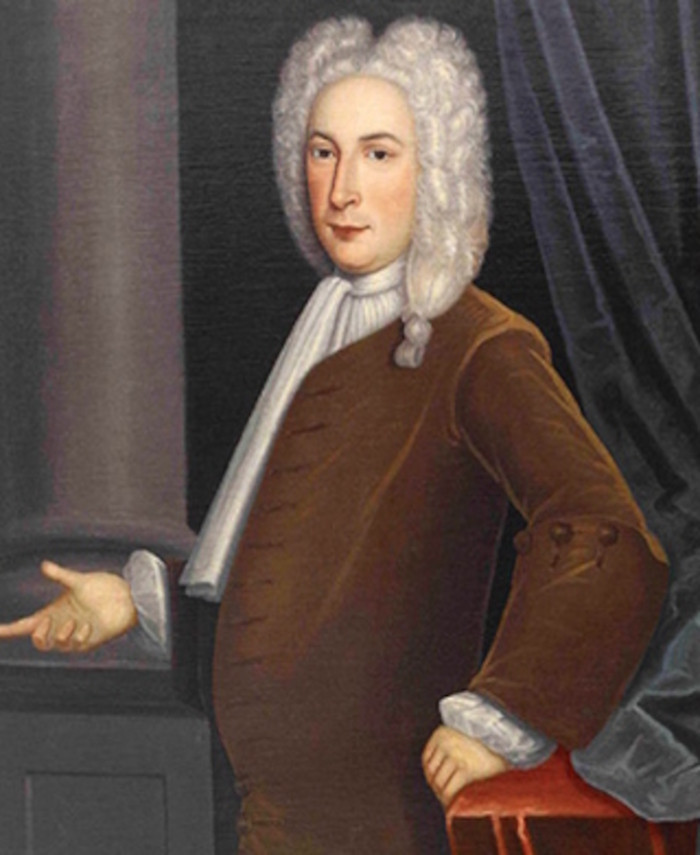
The Abolition of Slavery Act of the Parliament of the United Kingdom expanded the jurisdiction of the Slave Trade Act 1807 and made the purchase or ownership of slaves illegal within the British Empire, with the exception of “the Territories in the Possession of the East India Company”, Ceylon (now Sri Lanka), and Saint Helena. The Act provided for payments to slave-owners. The amount of money to be spent on the payments was set at “the Sum of Twenty Million Pounds Sterling”. Under the terms of the Act, the British government raised £20 million to pay out for the loss of the slaves as business assets to the registered owners of the freed slaves.
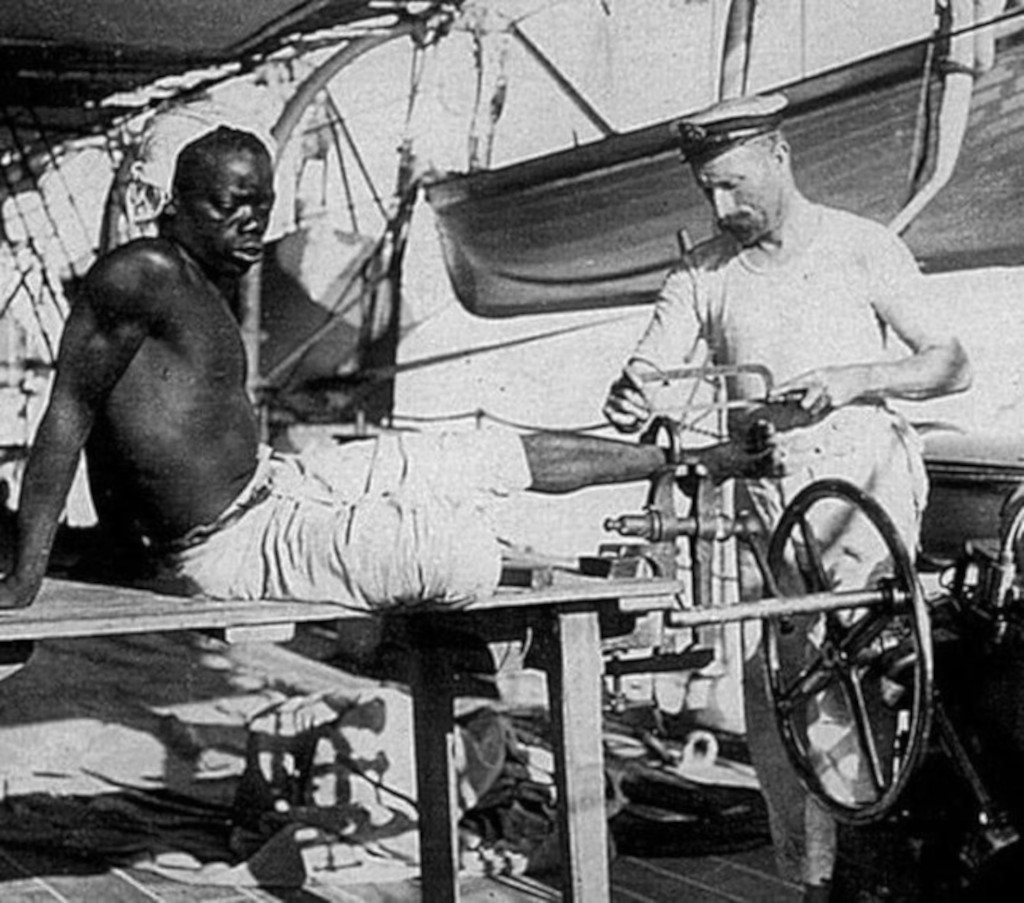
In 1833, £20 million amounted to 40% of the Treasury's annual income or approximately 5% of British GDP at the time. To finance the payments, the British government took on a £15 million loan, finalised on 3 August 1835, with banker Nathan Mayer Rothschild and his brother-in-law Moses Montefiore; £5 million was paid out directly in government stock, worth £1.5 billion in present day. The money was not paid back by the British taxpayers until 2015, when the British Government decided to modernise the gilt portfolio by redeeming all remaining undated gilts.
In fact, brave white Anglo-Americans such as Deists Thomas Jefferson and Thomas Paine enacted to end the slave trade by endeavouring to put it as cruelty despite influencial protest from powerful Jewish lobbying pressure.
